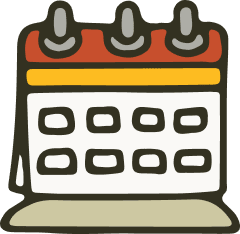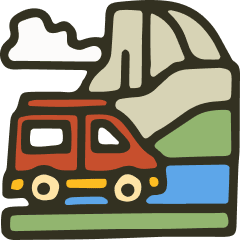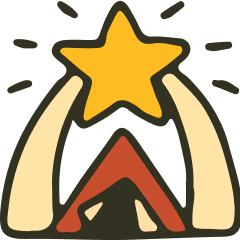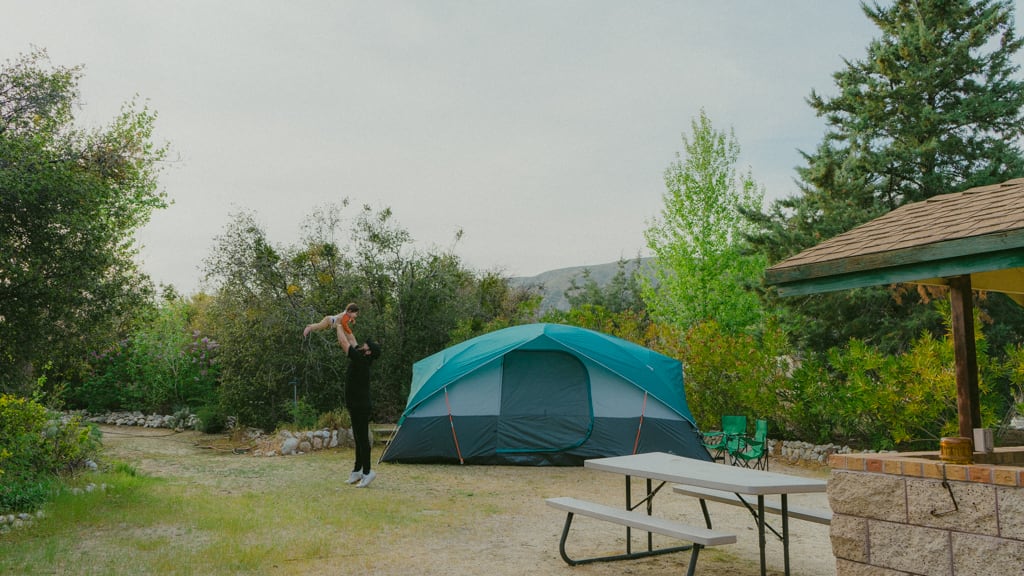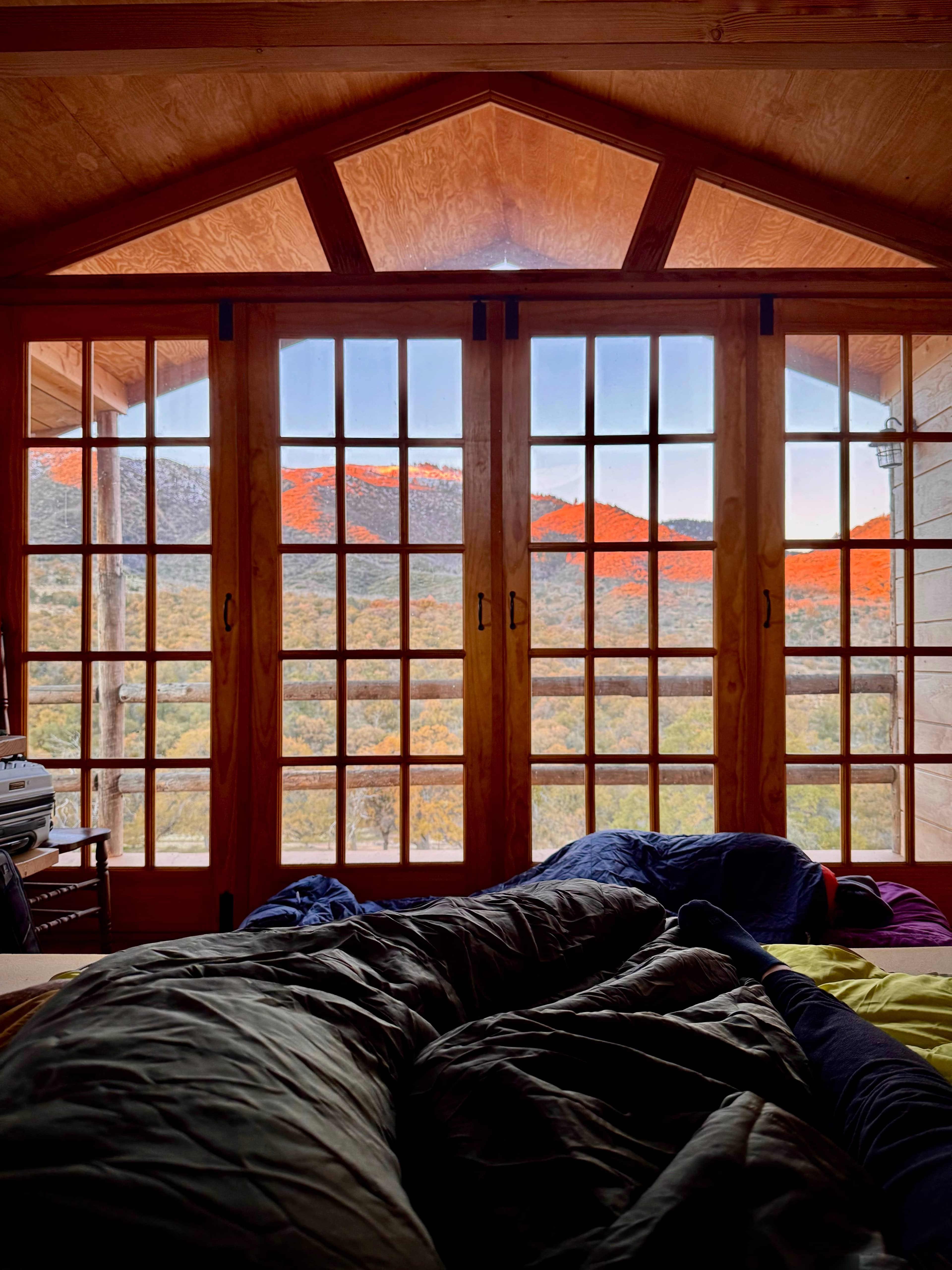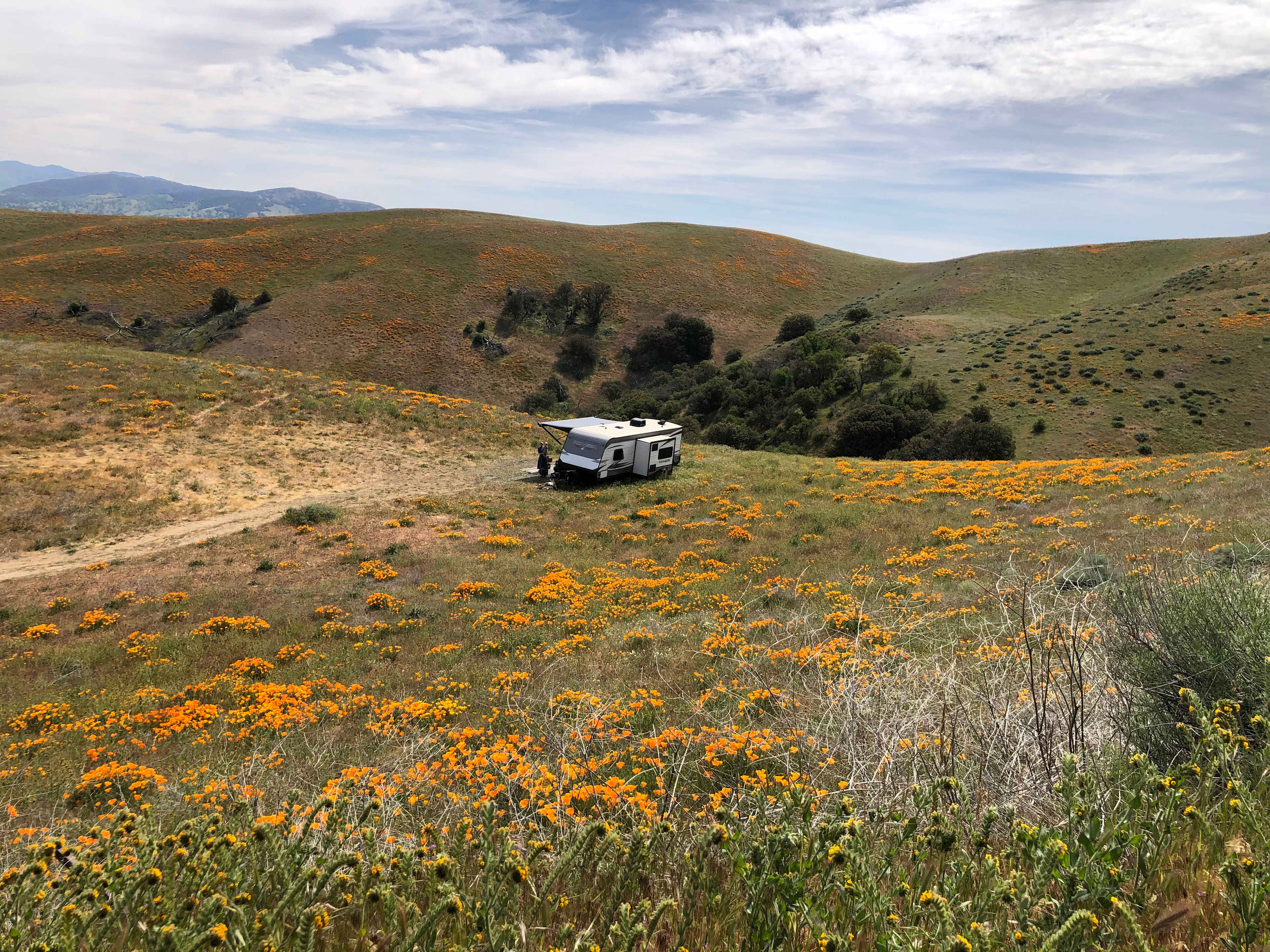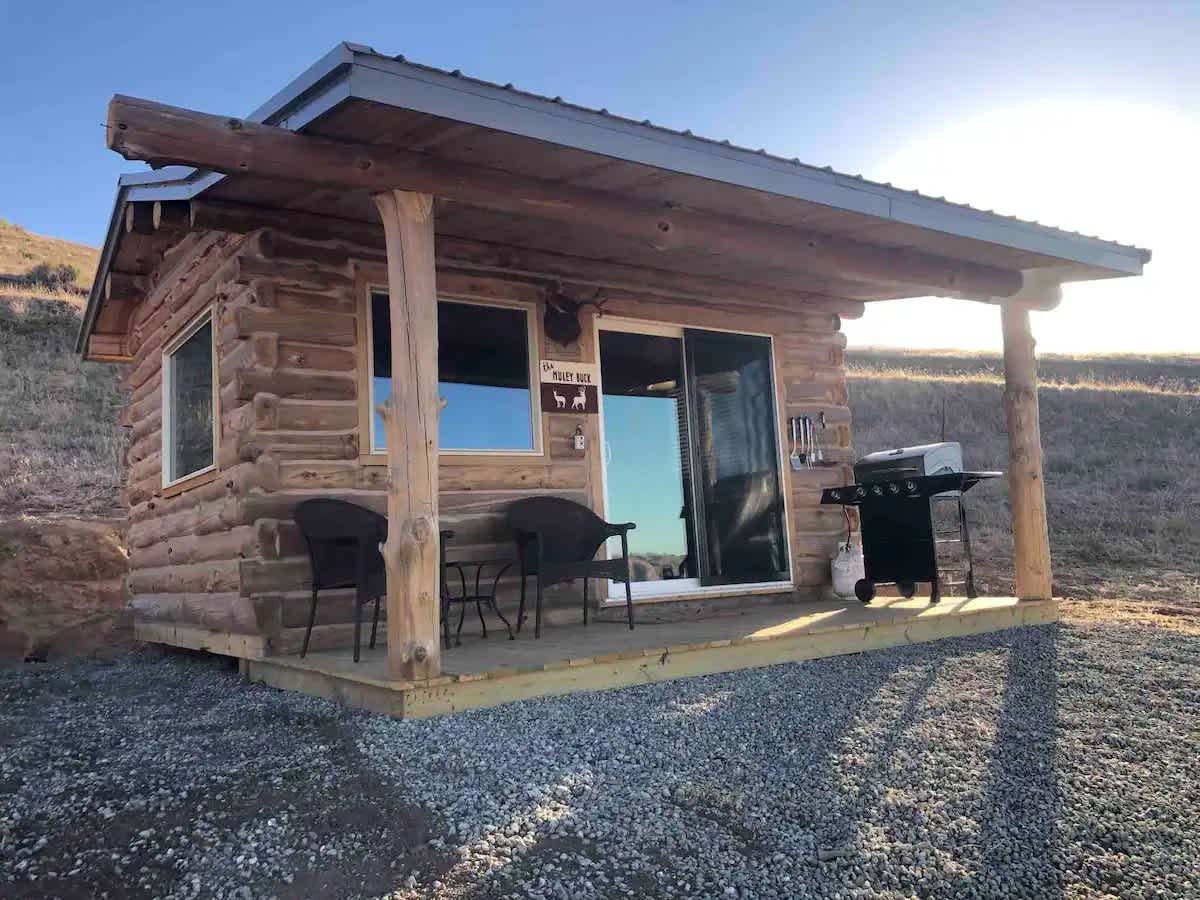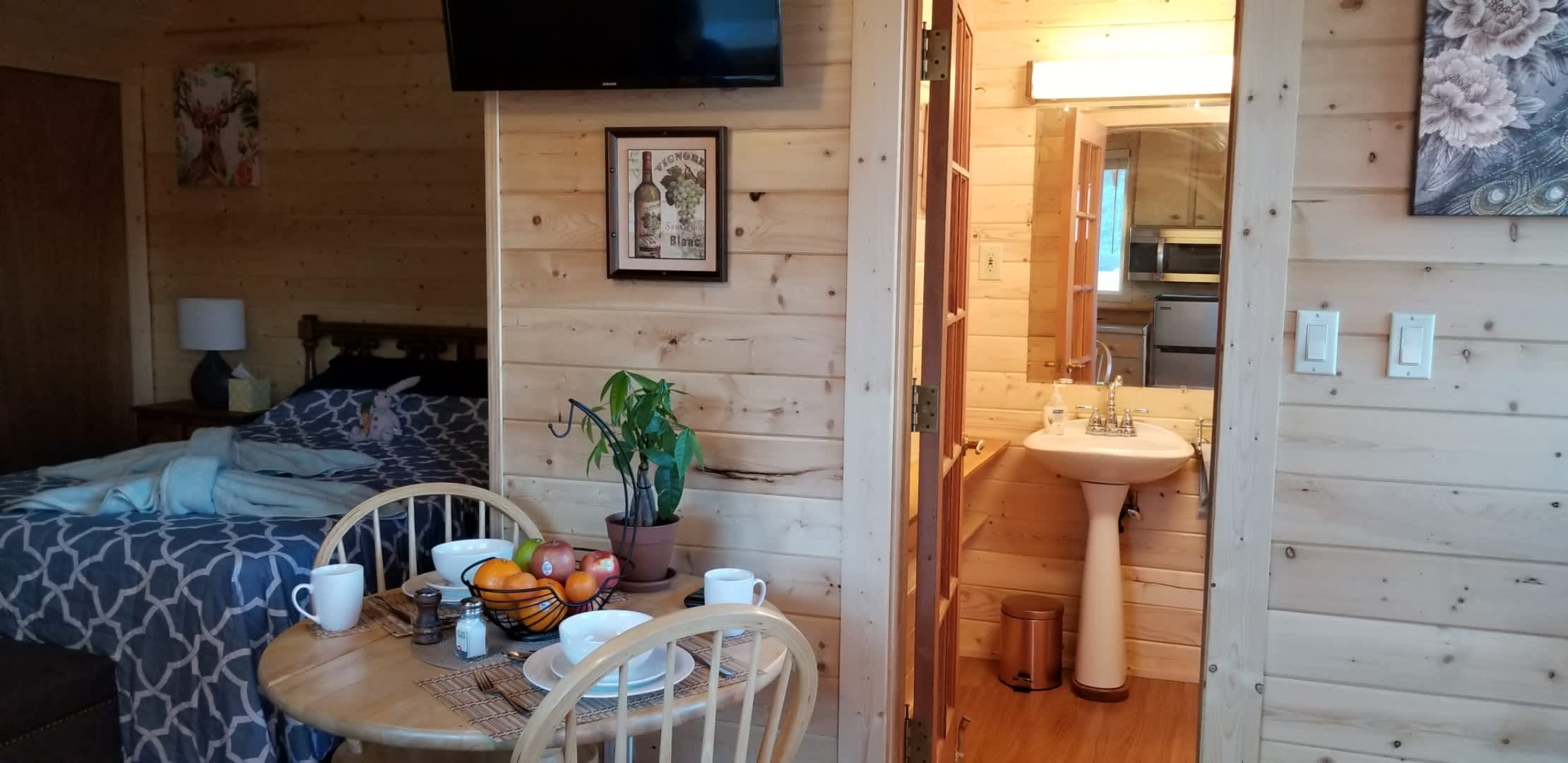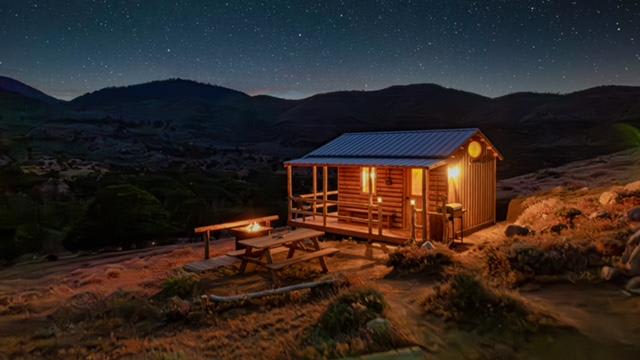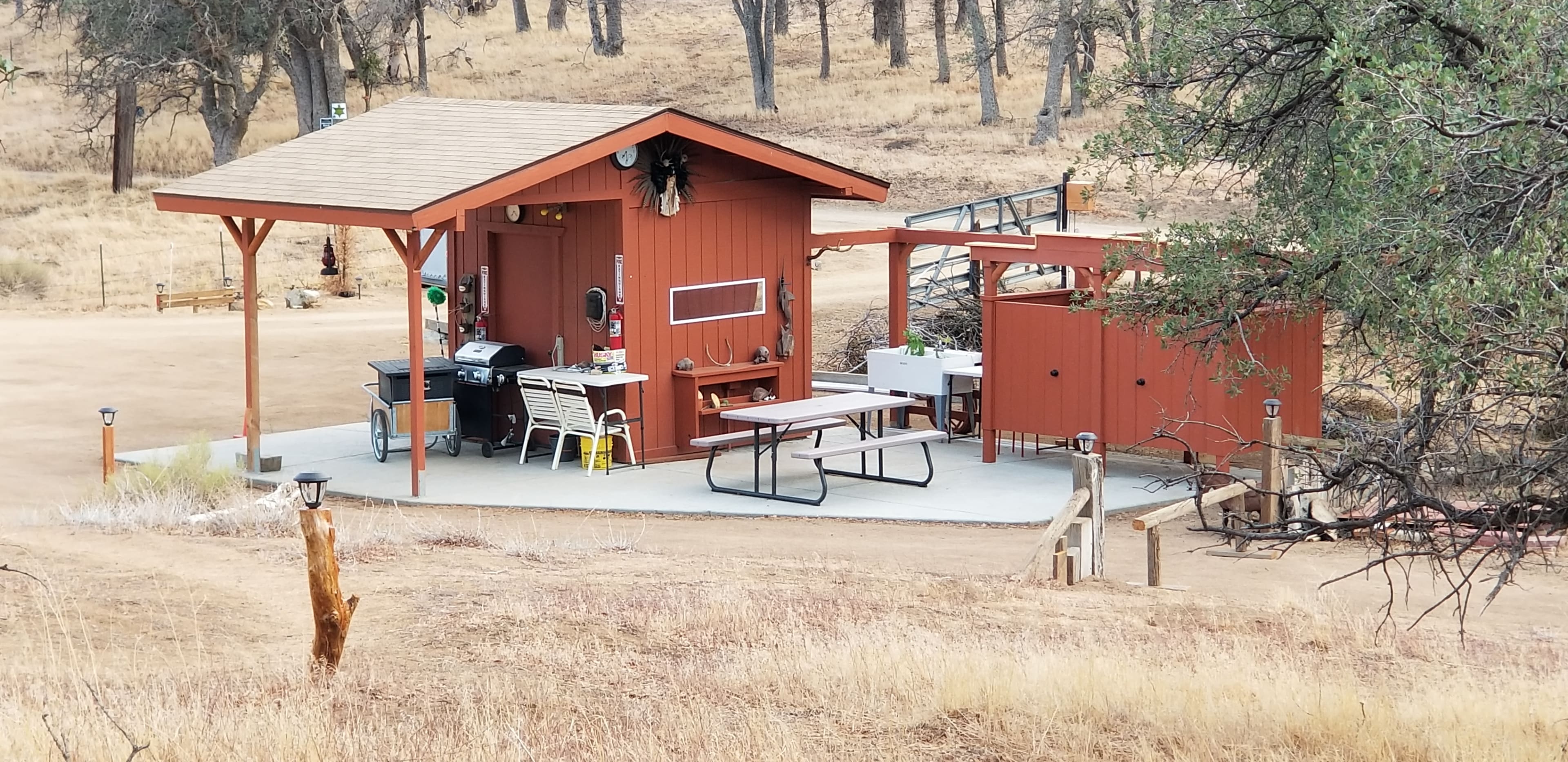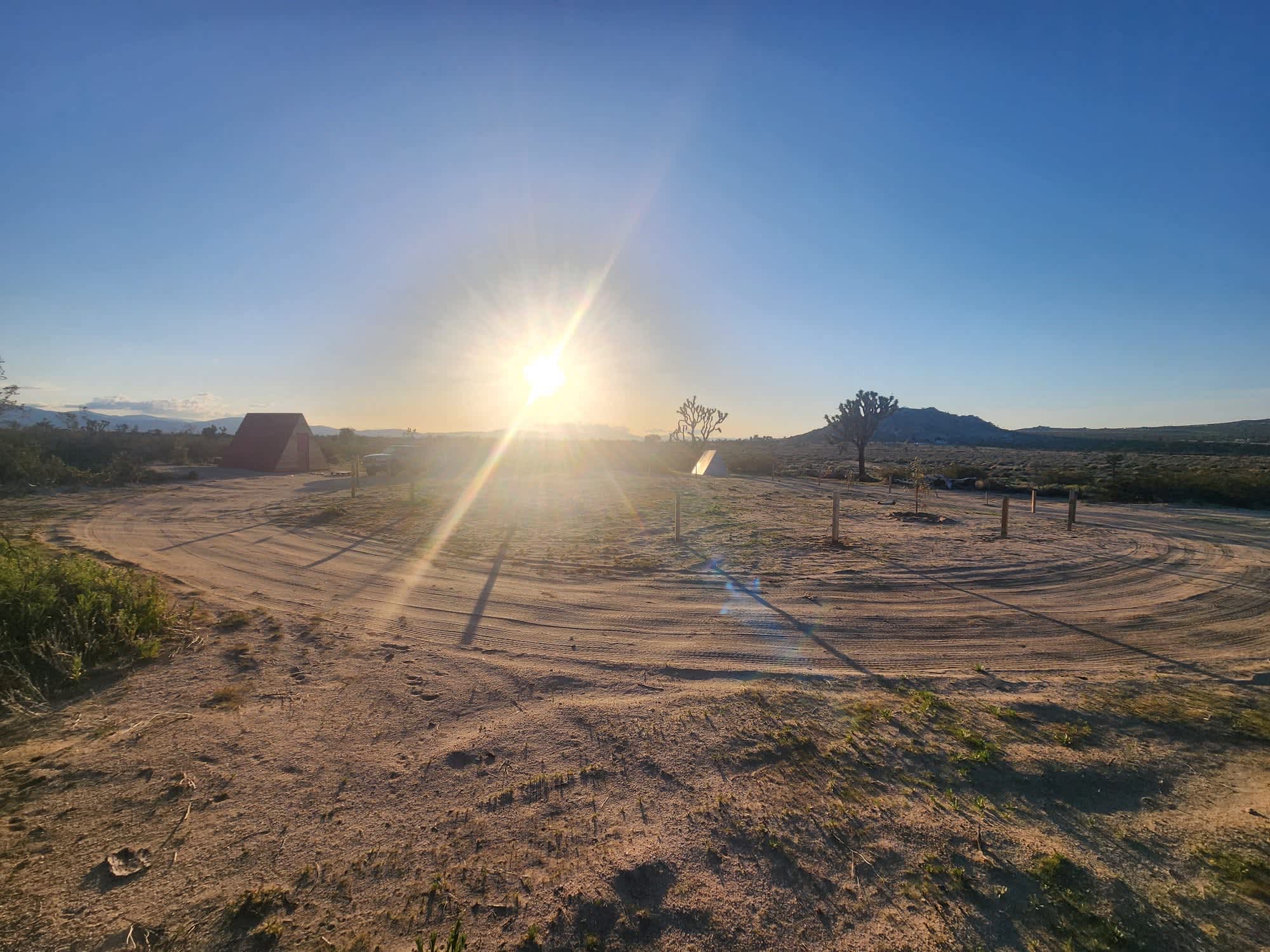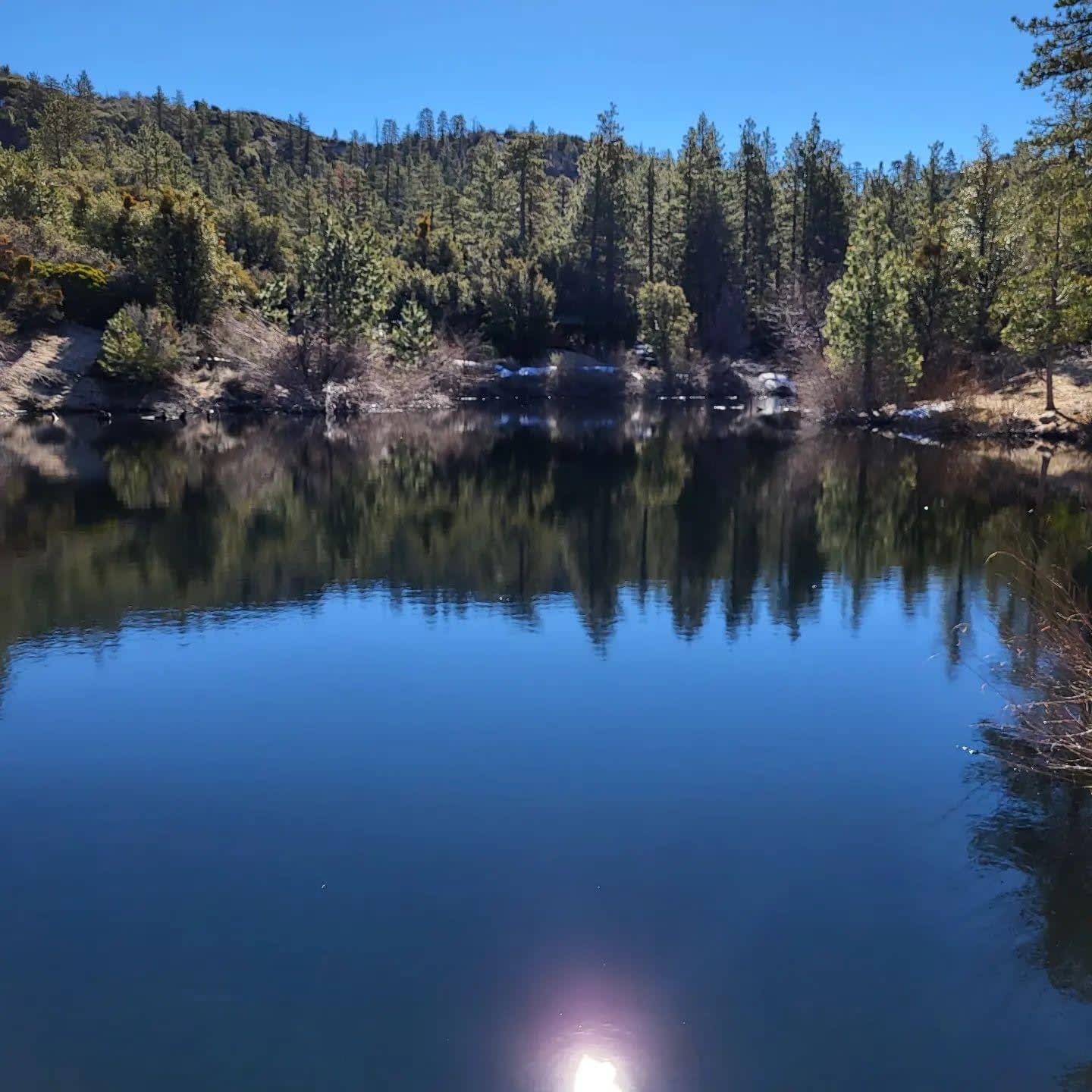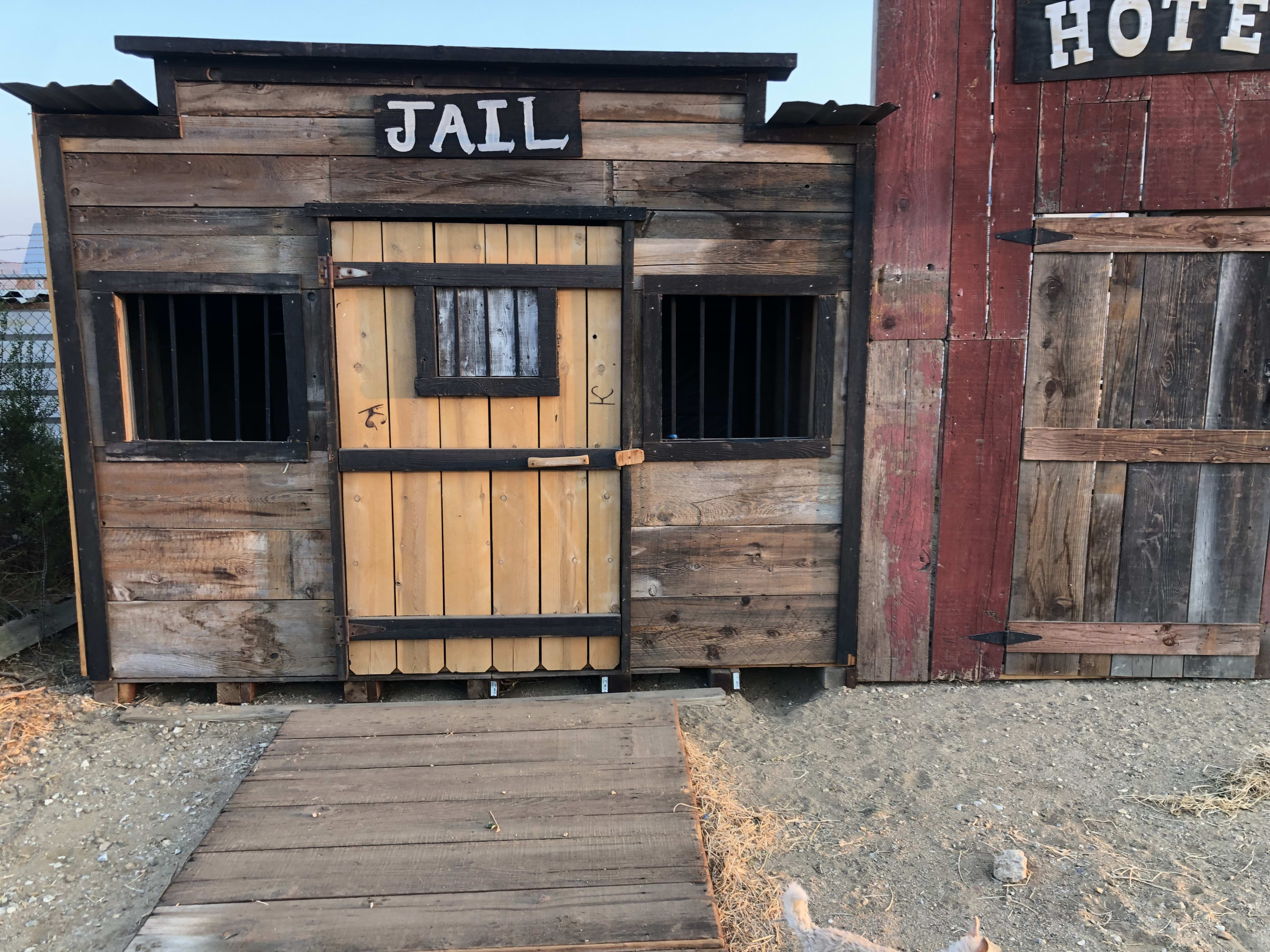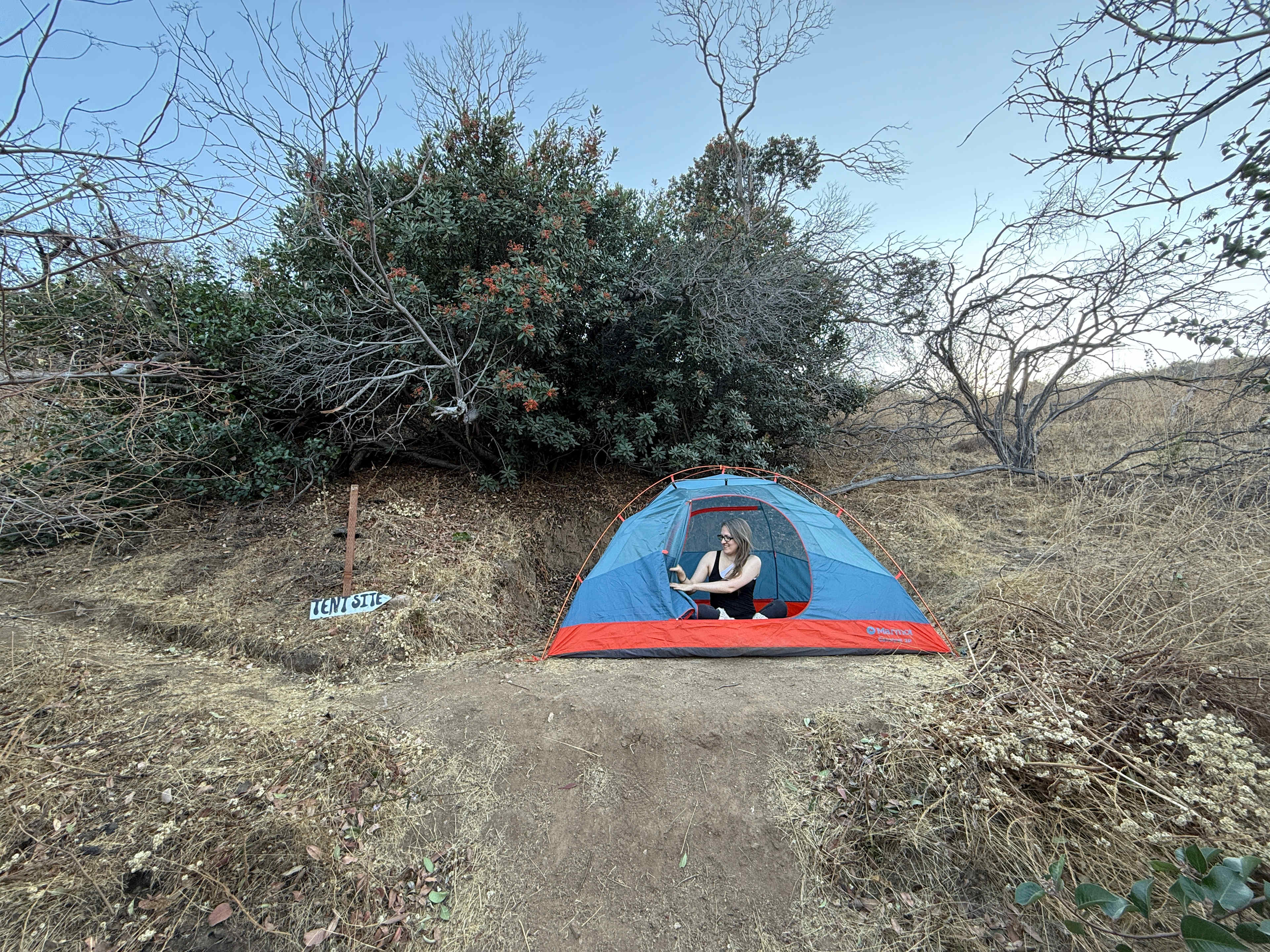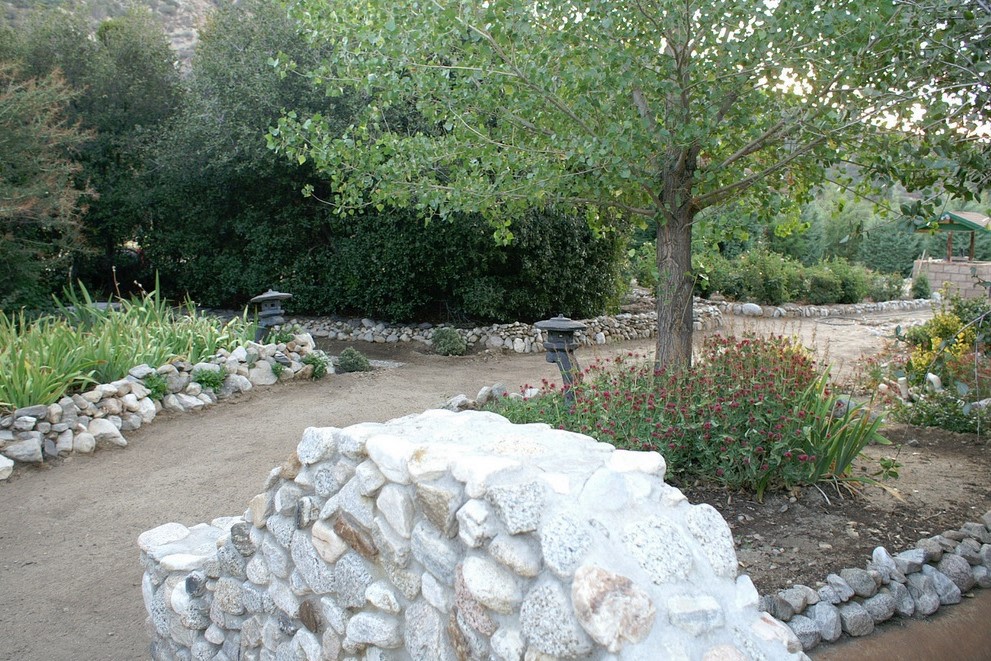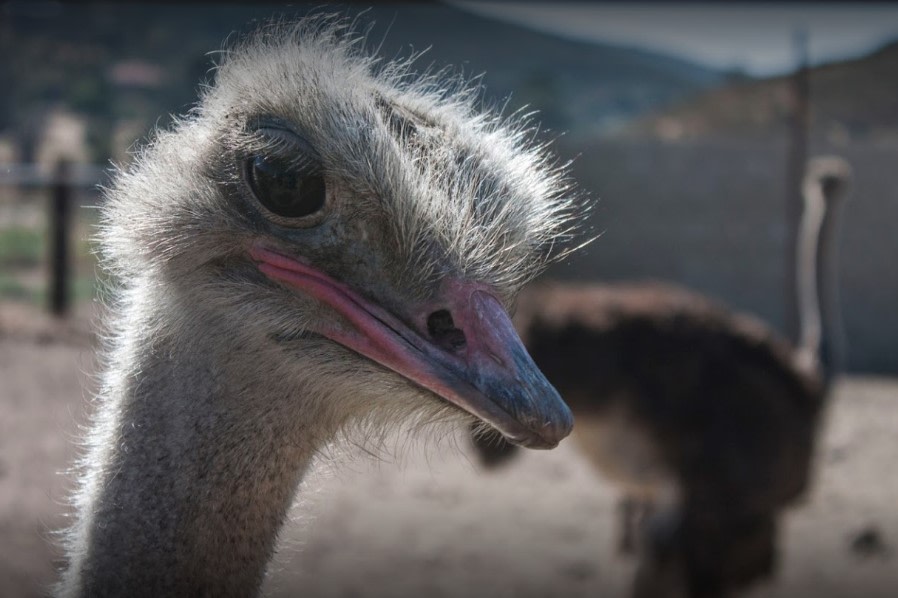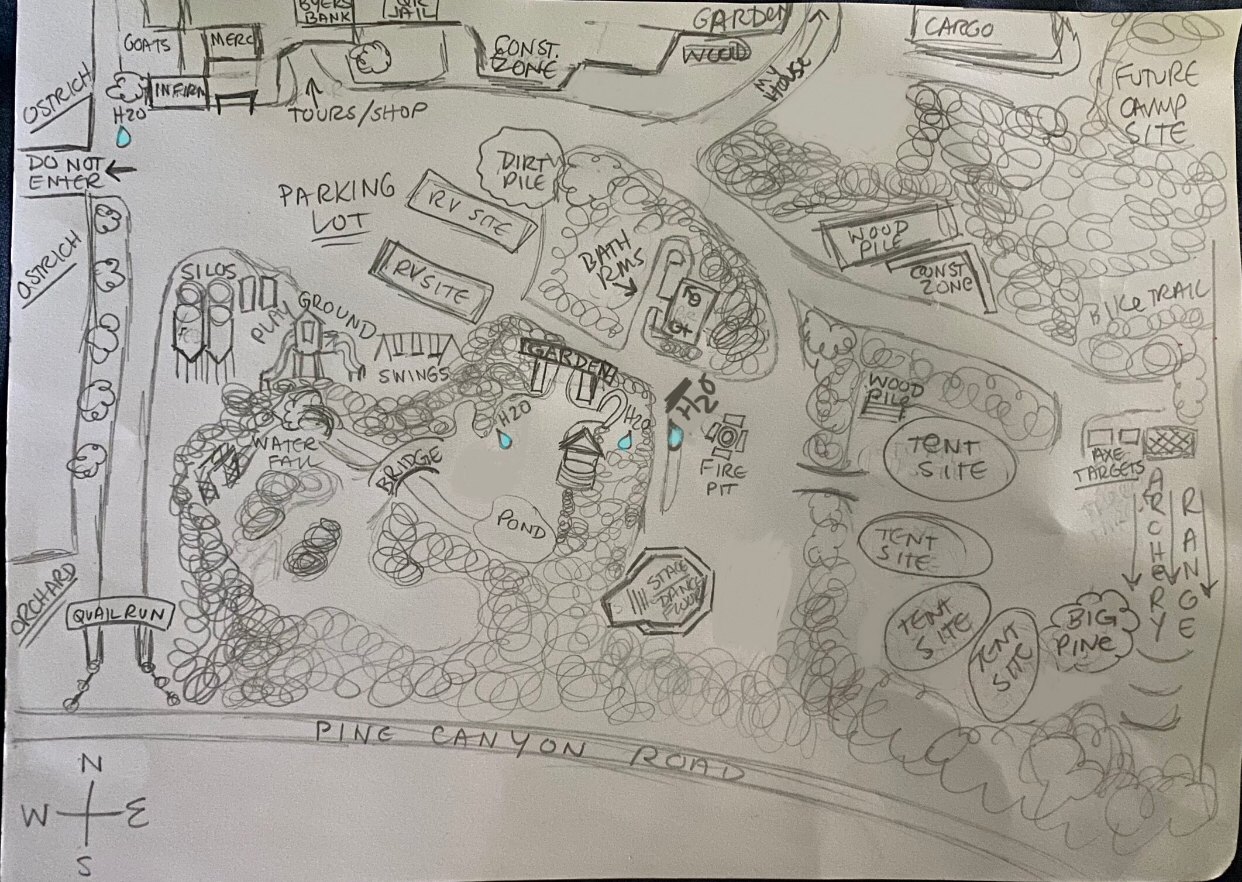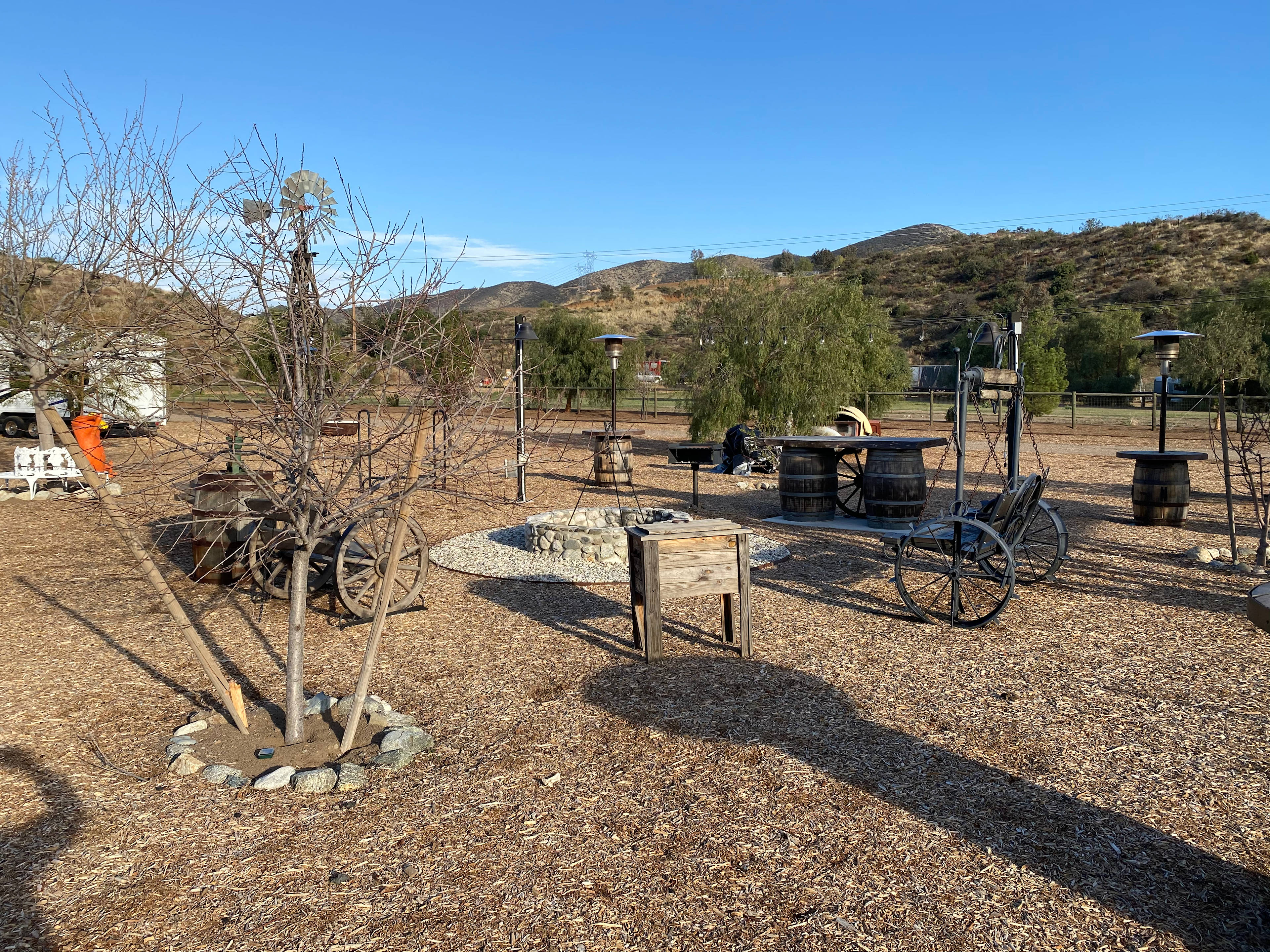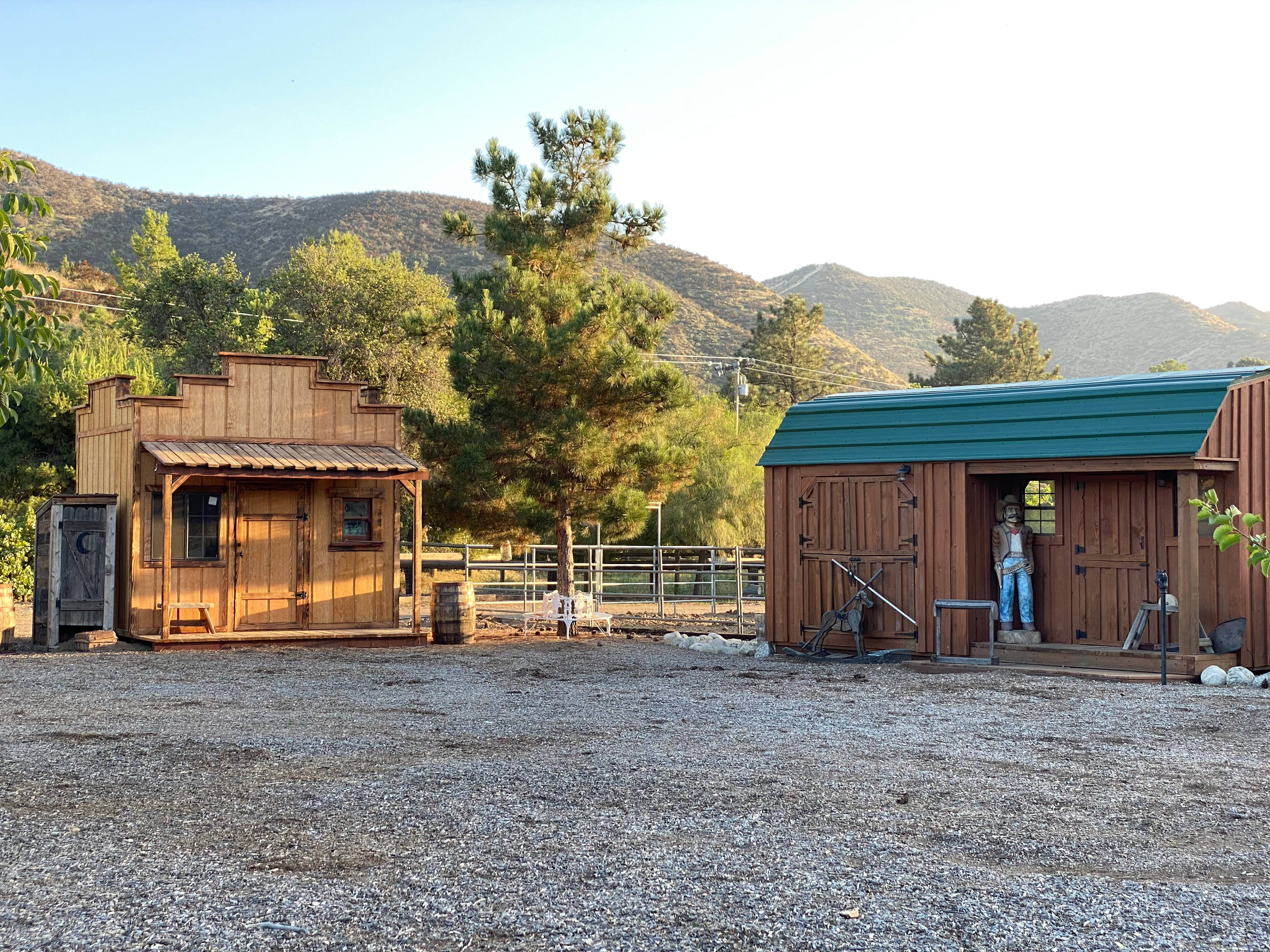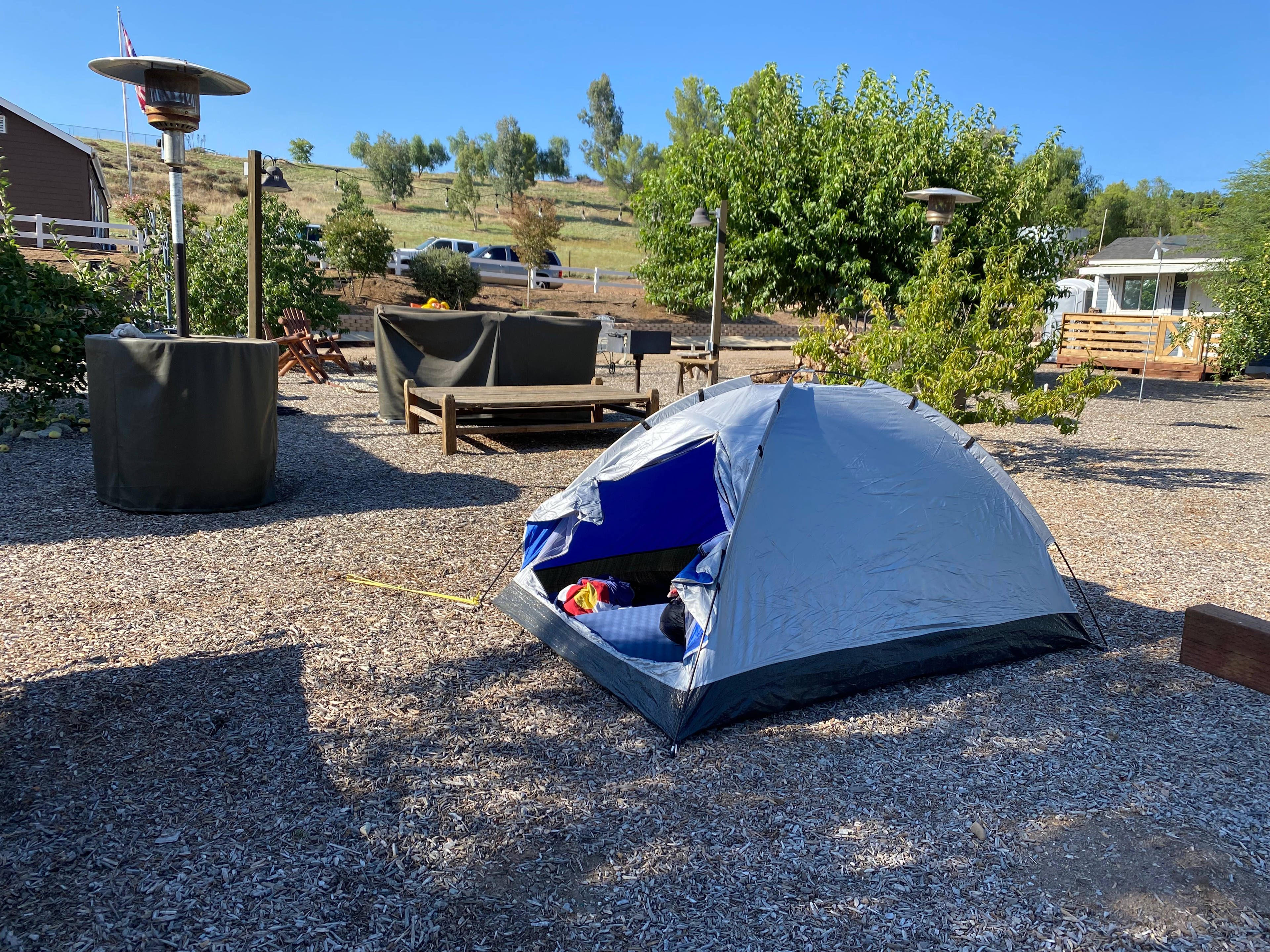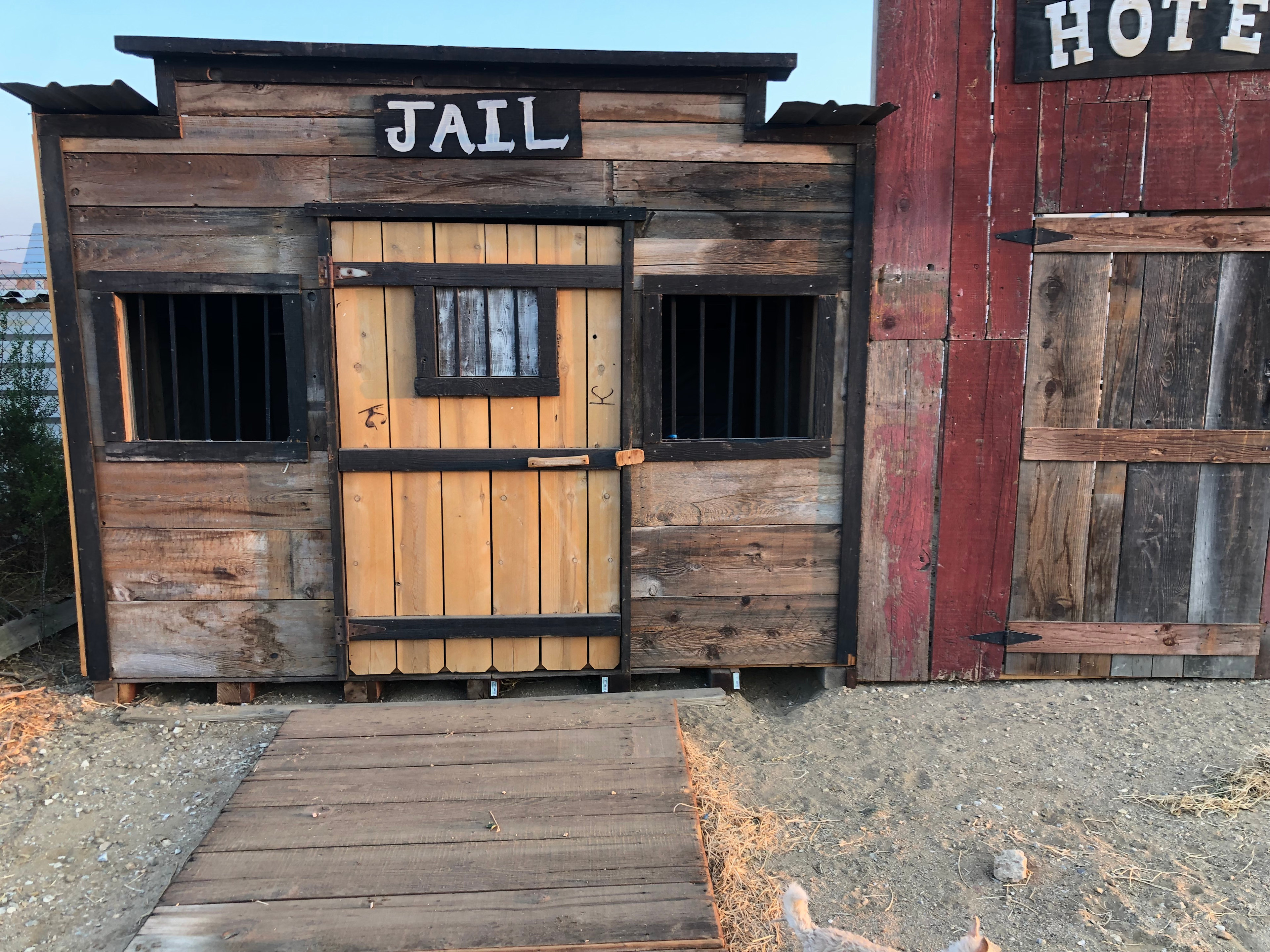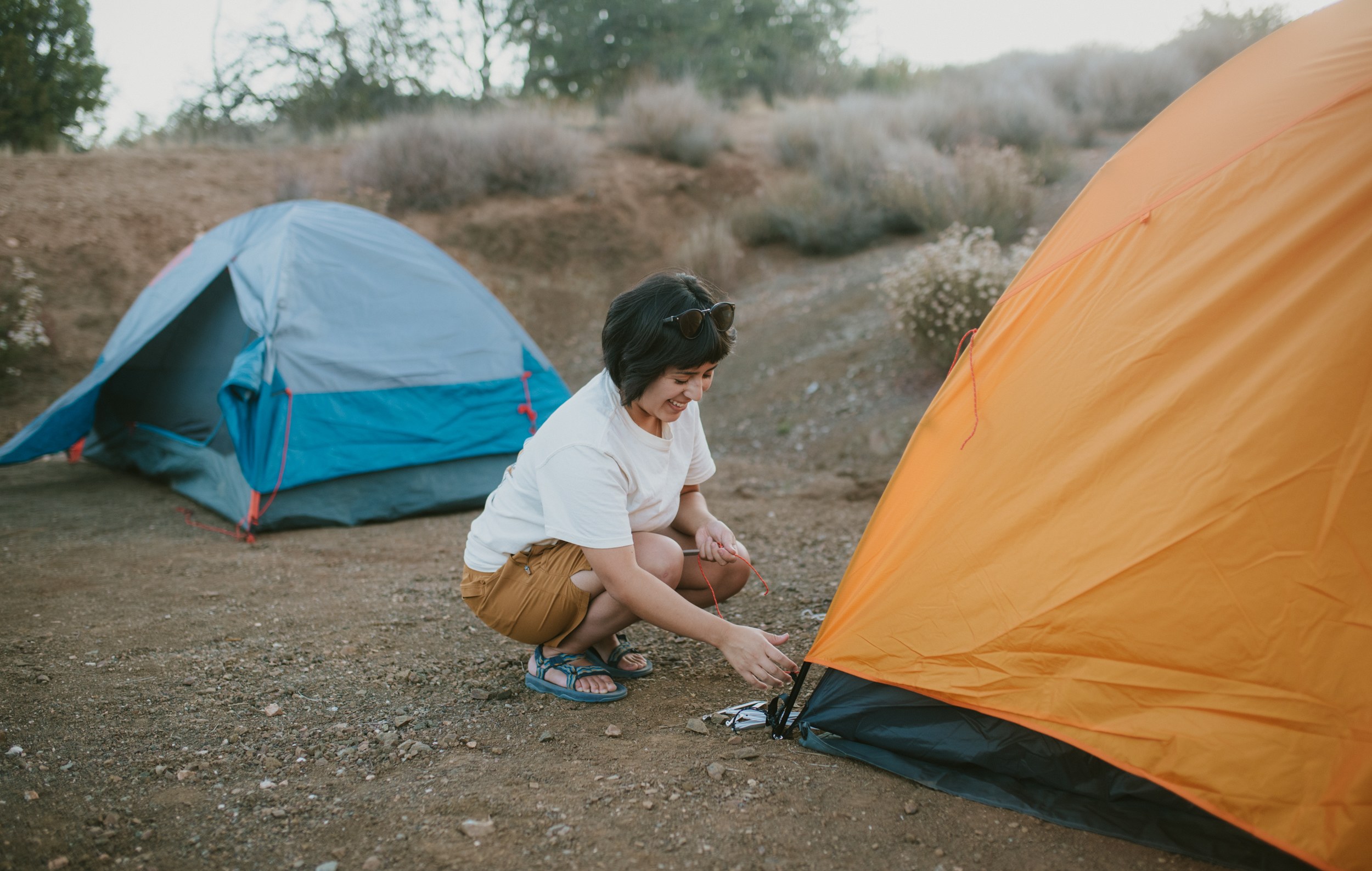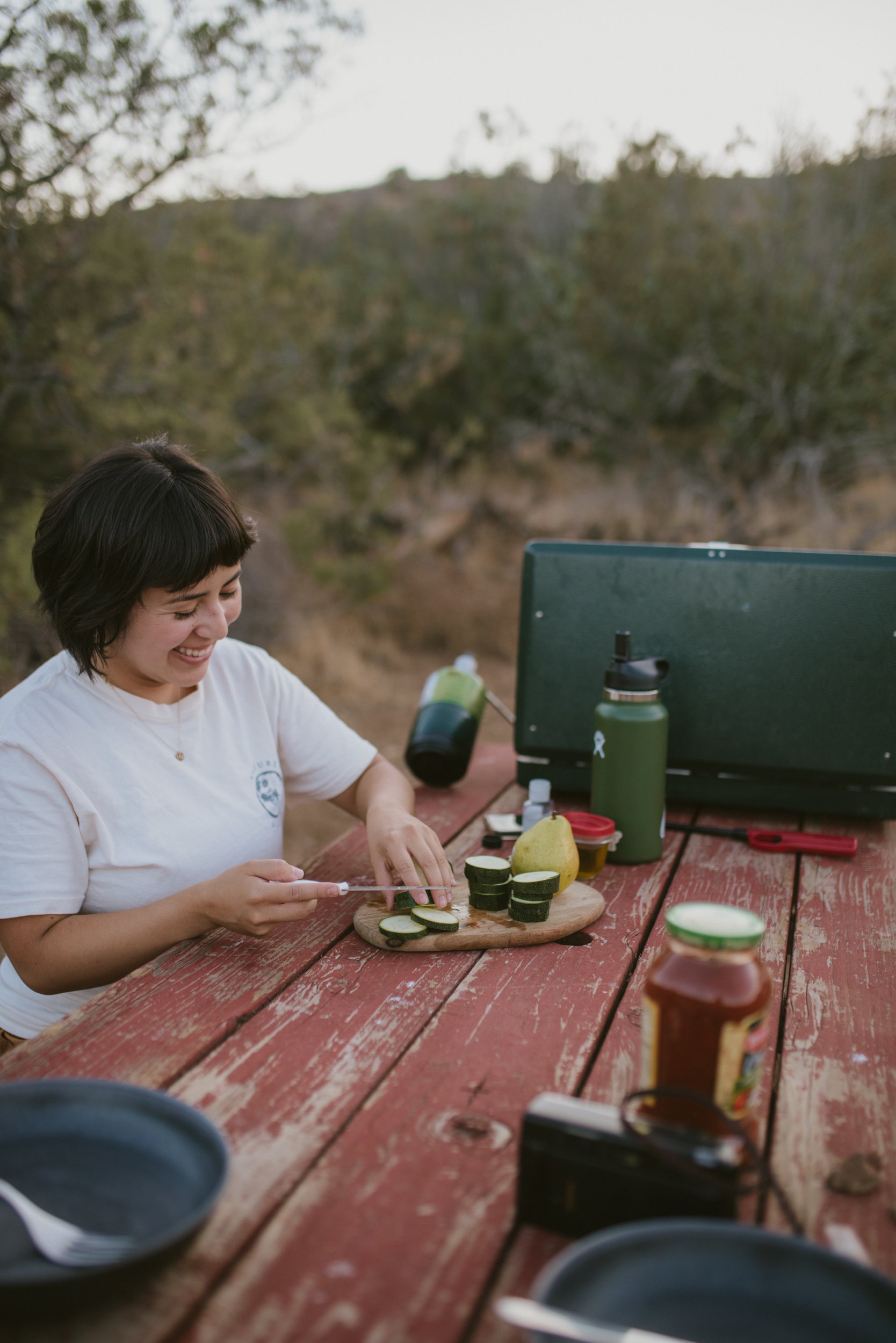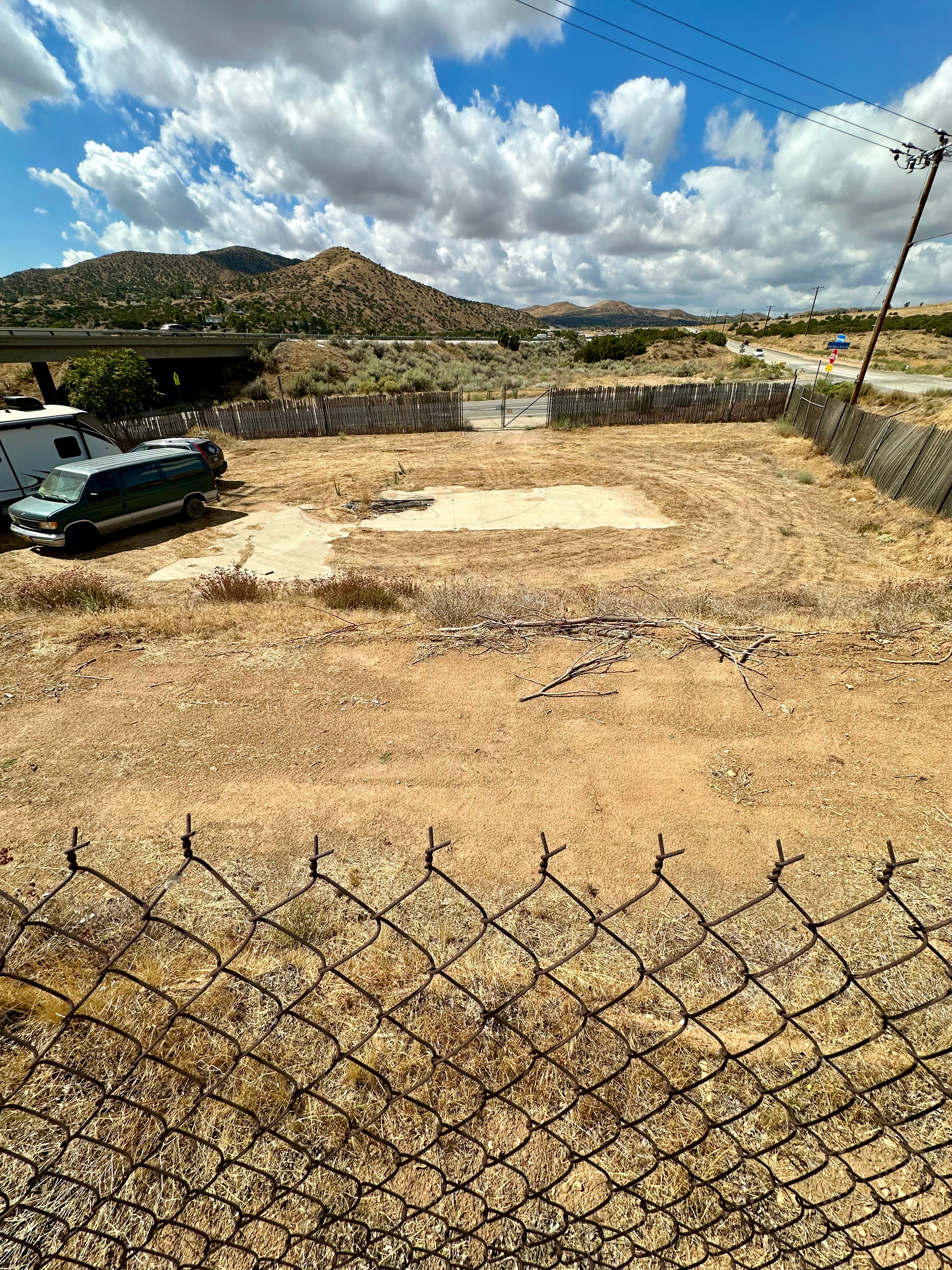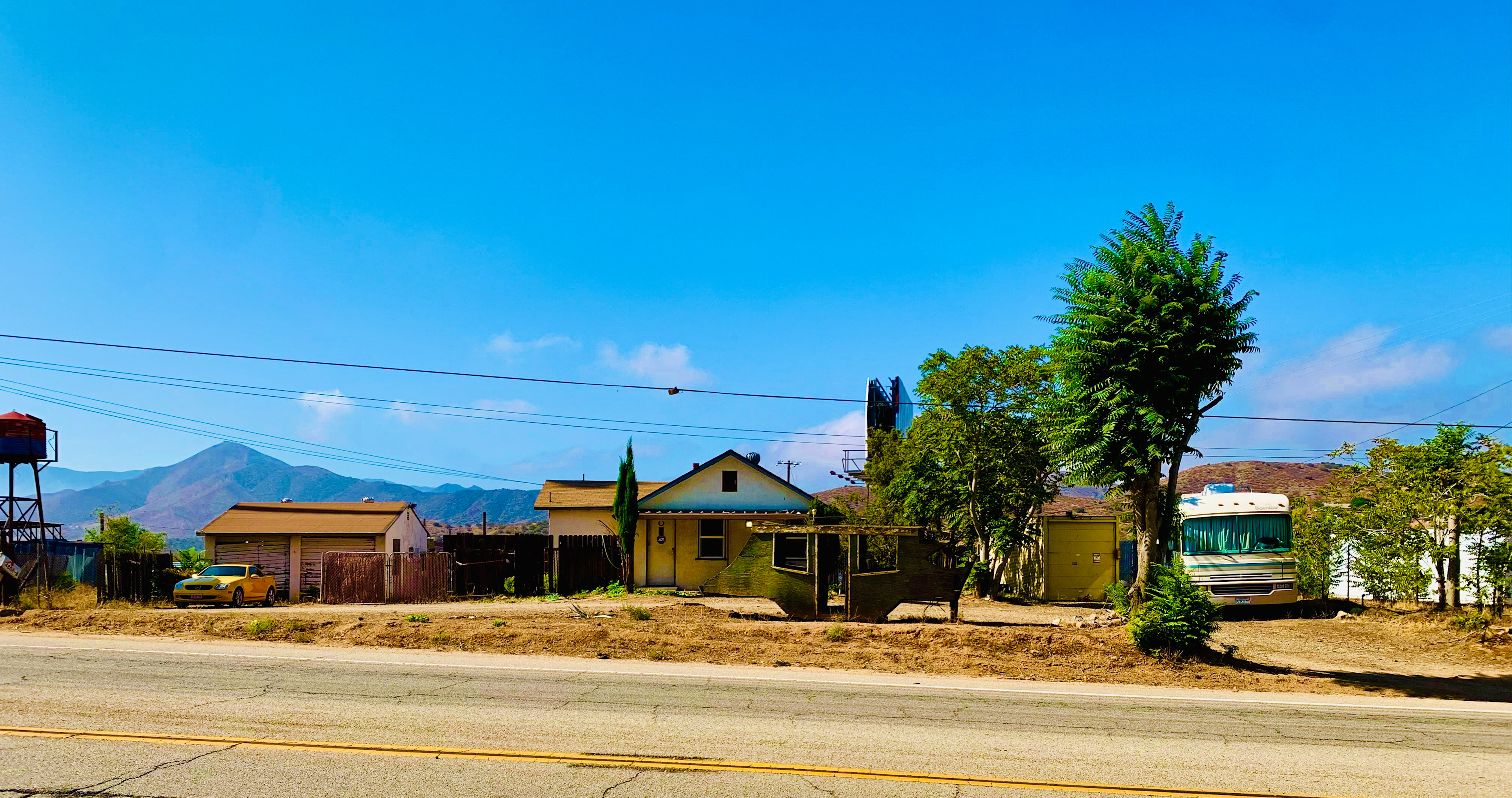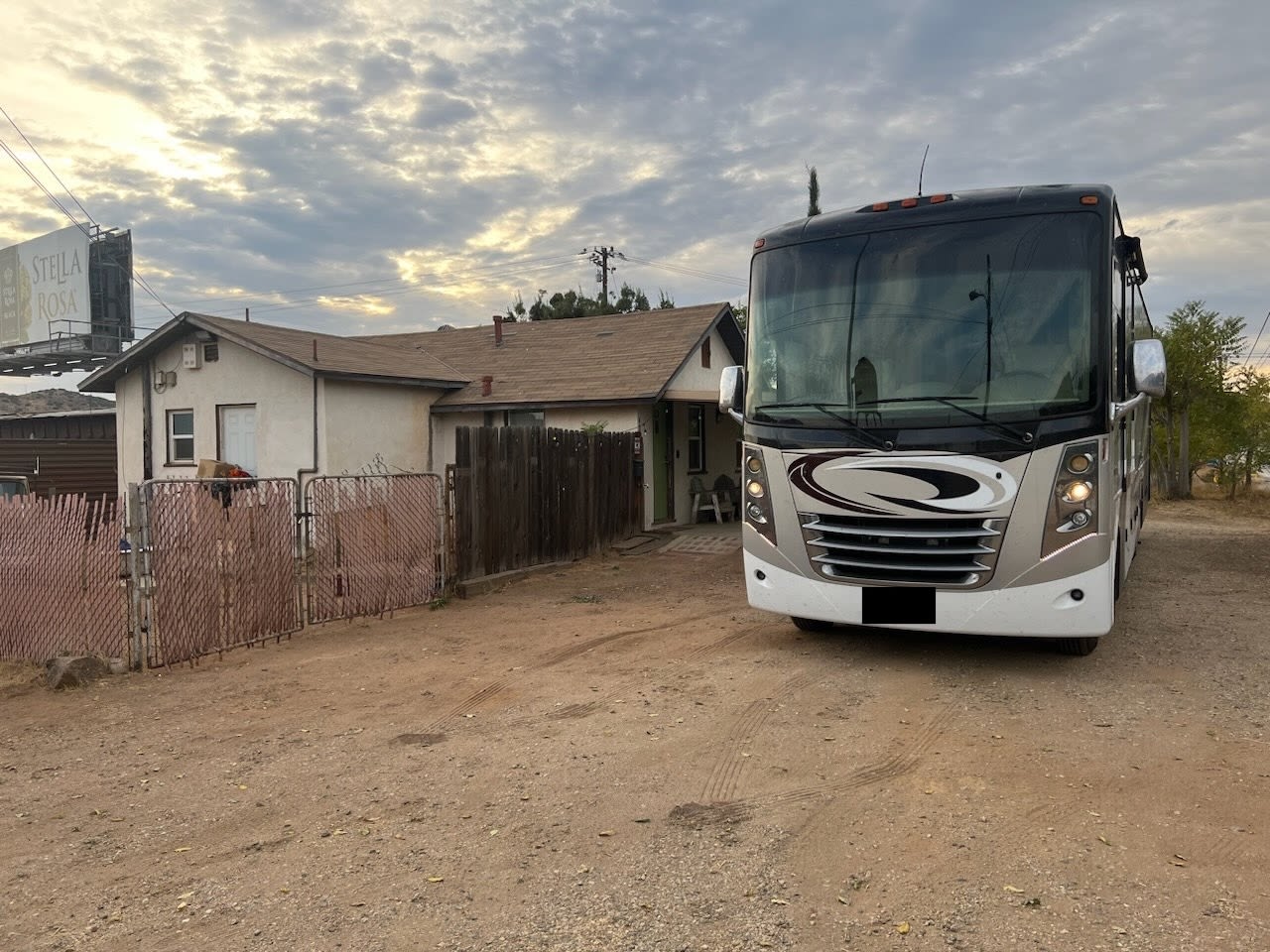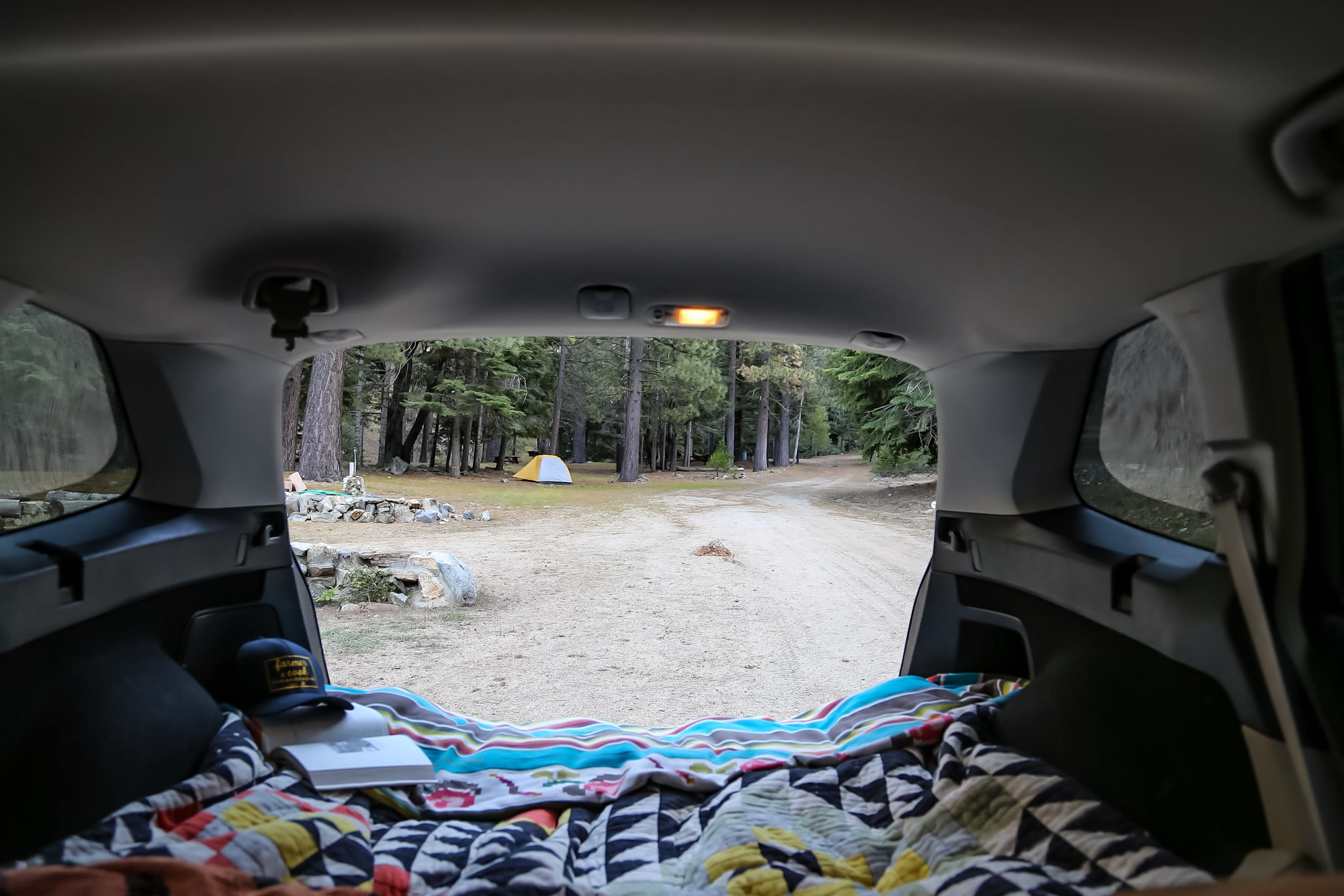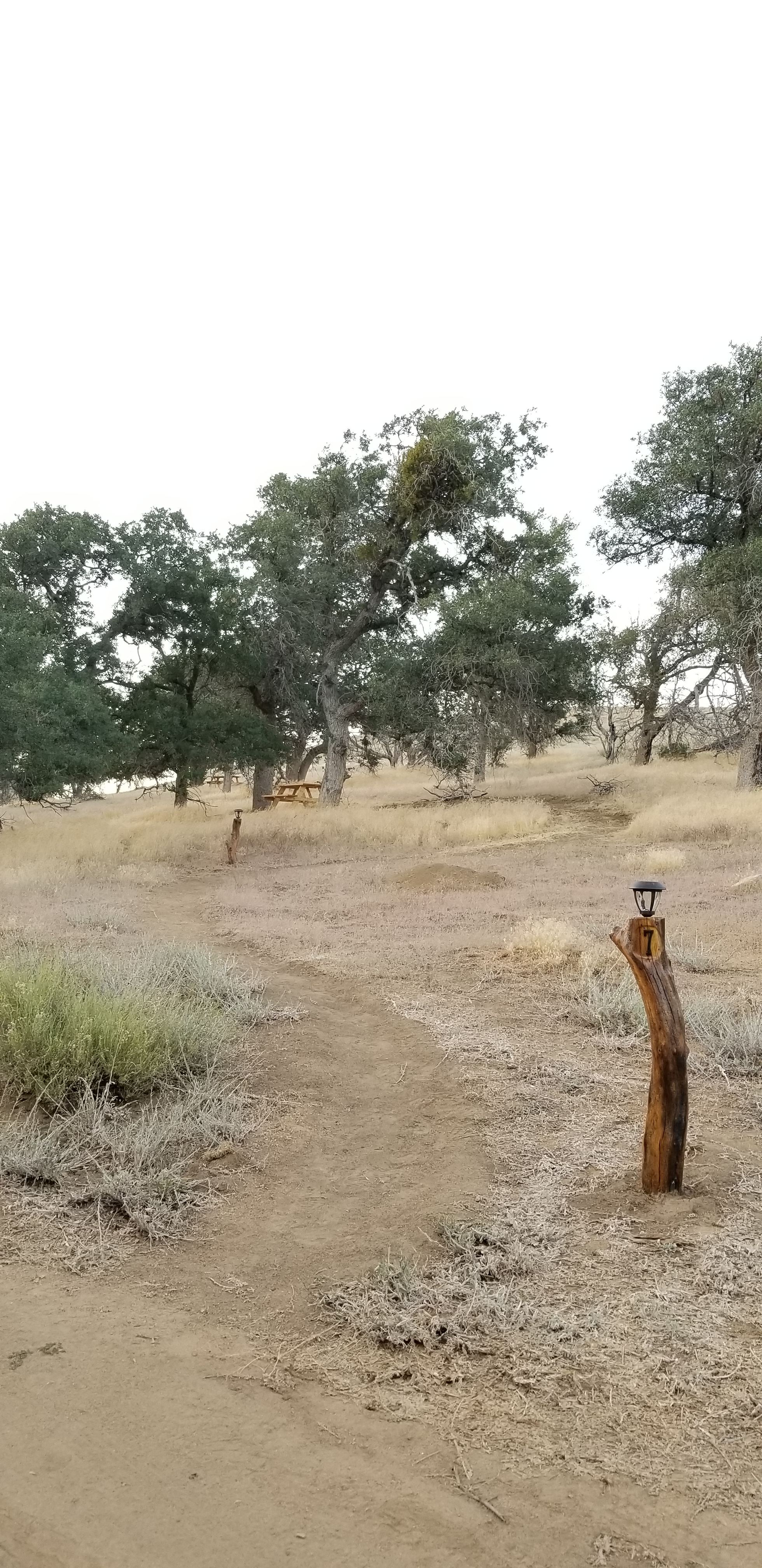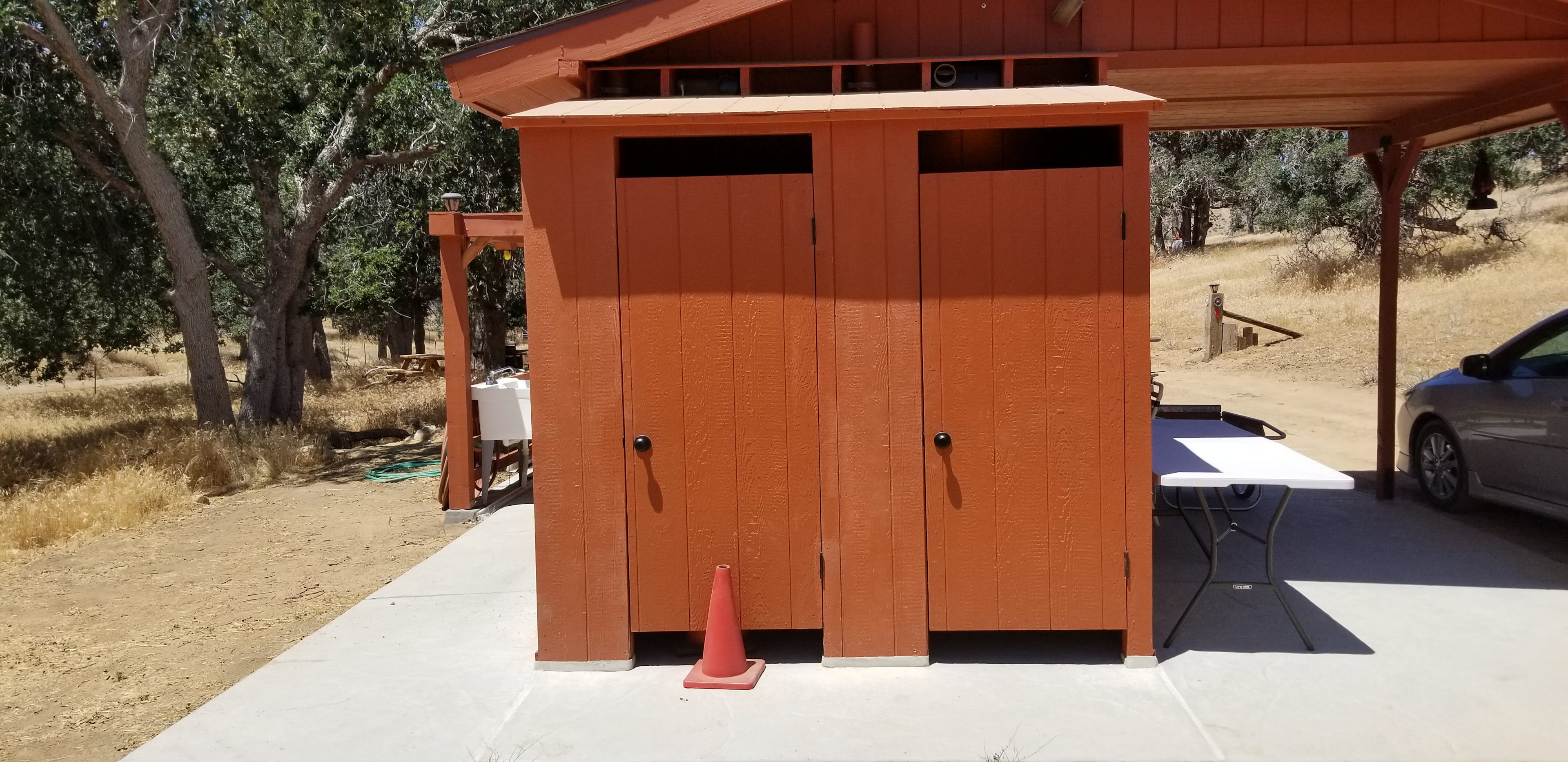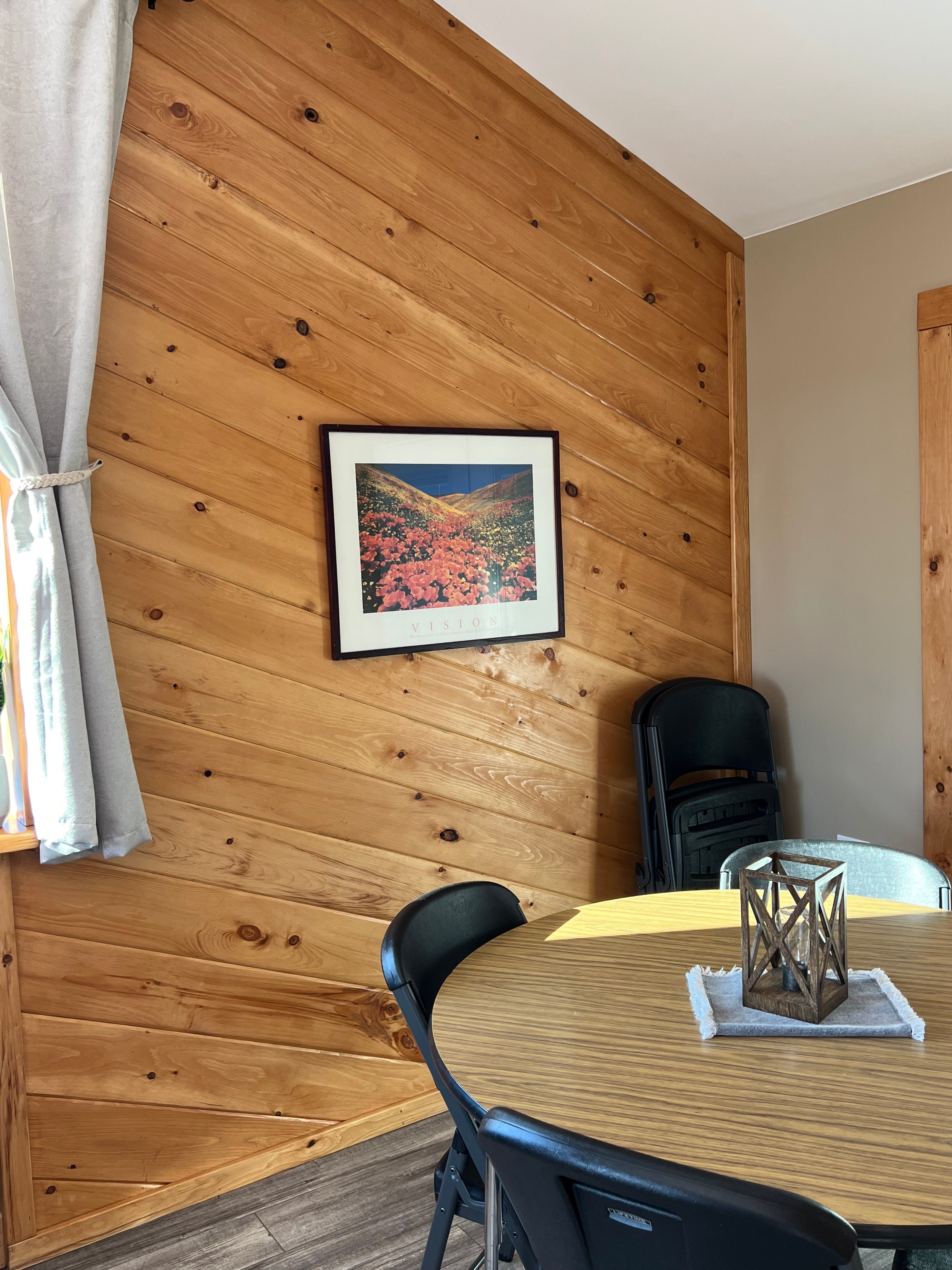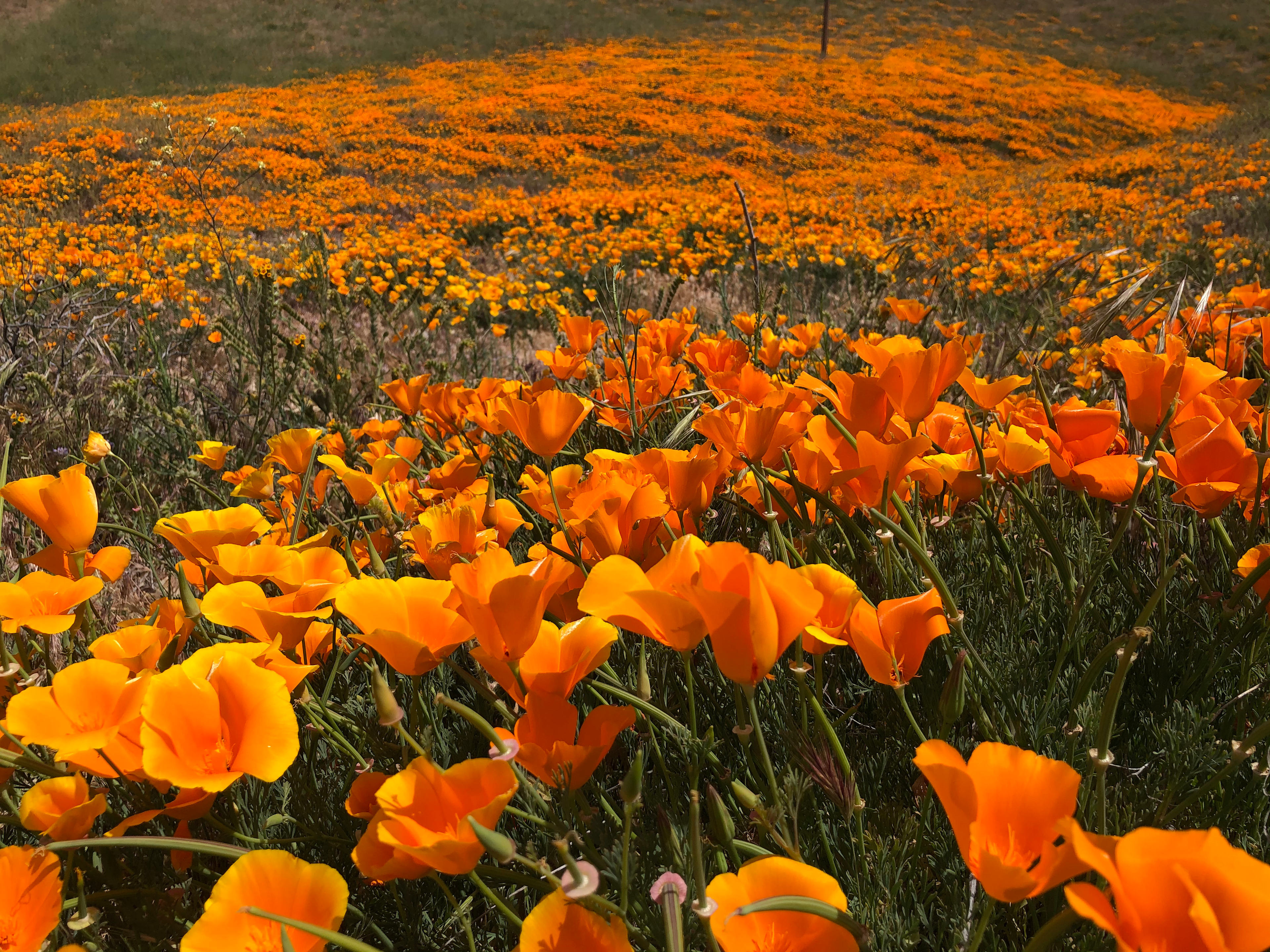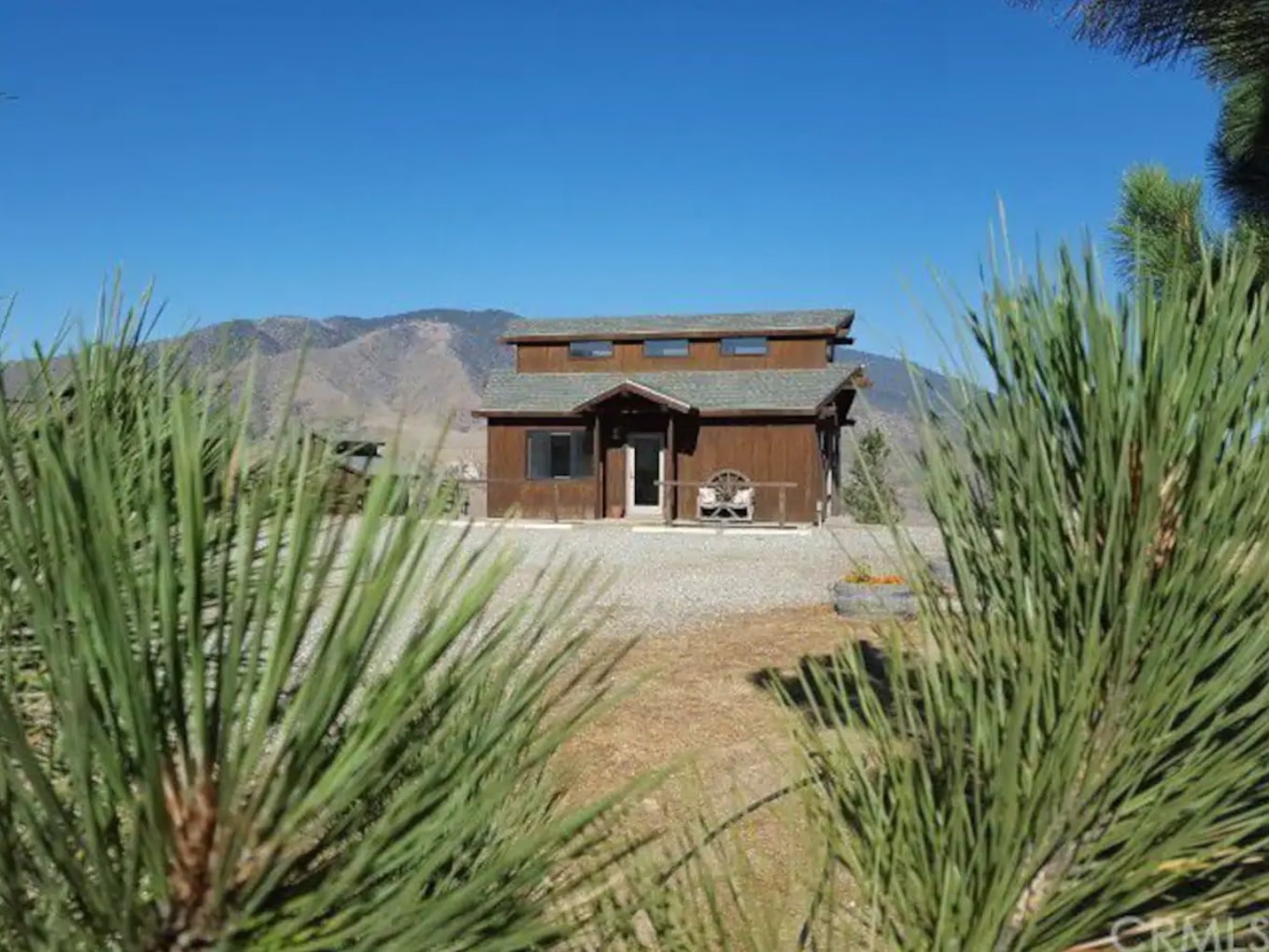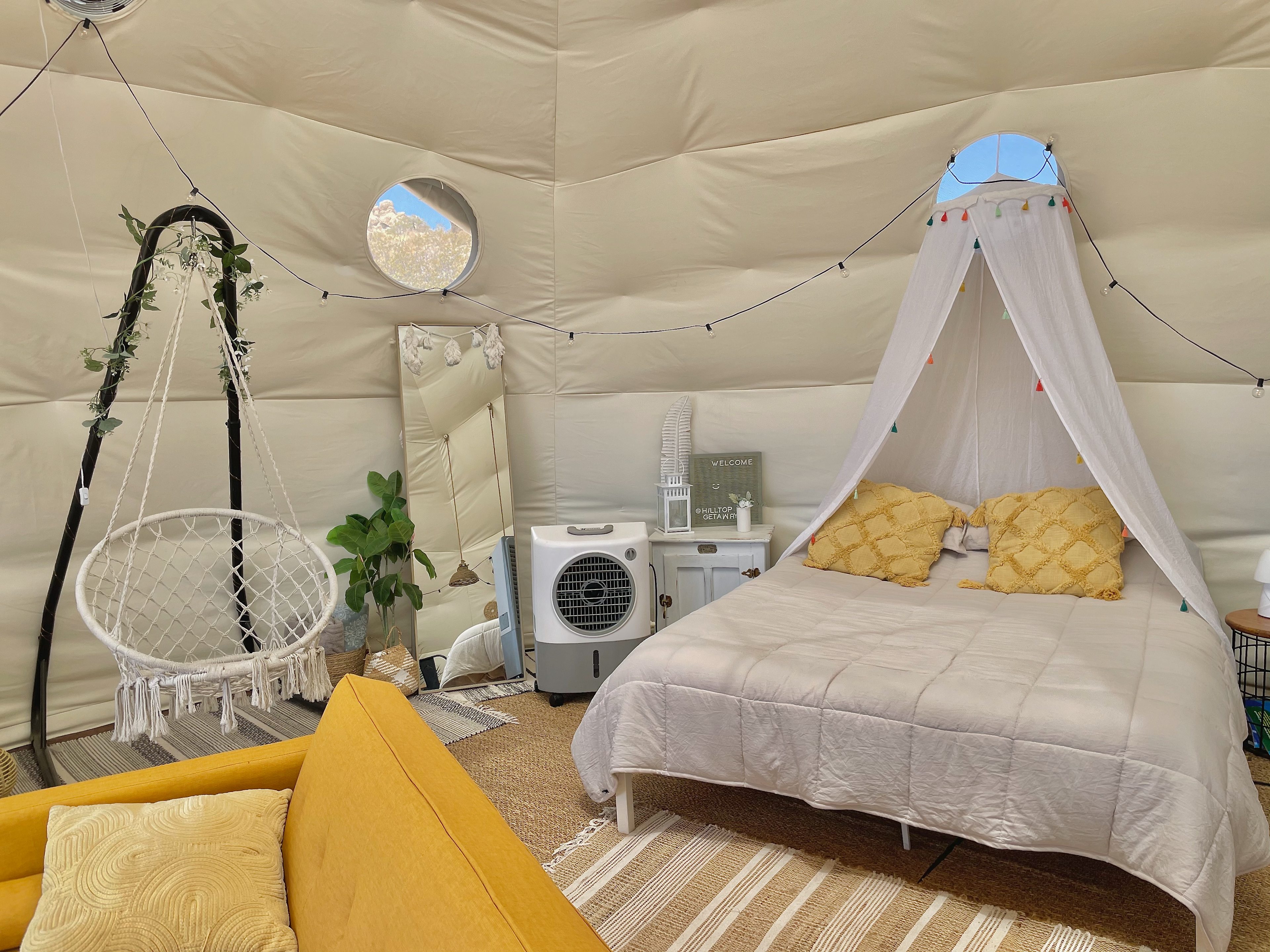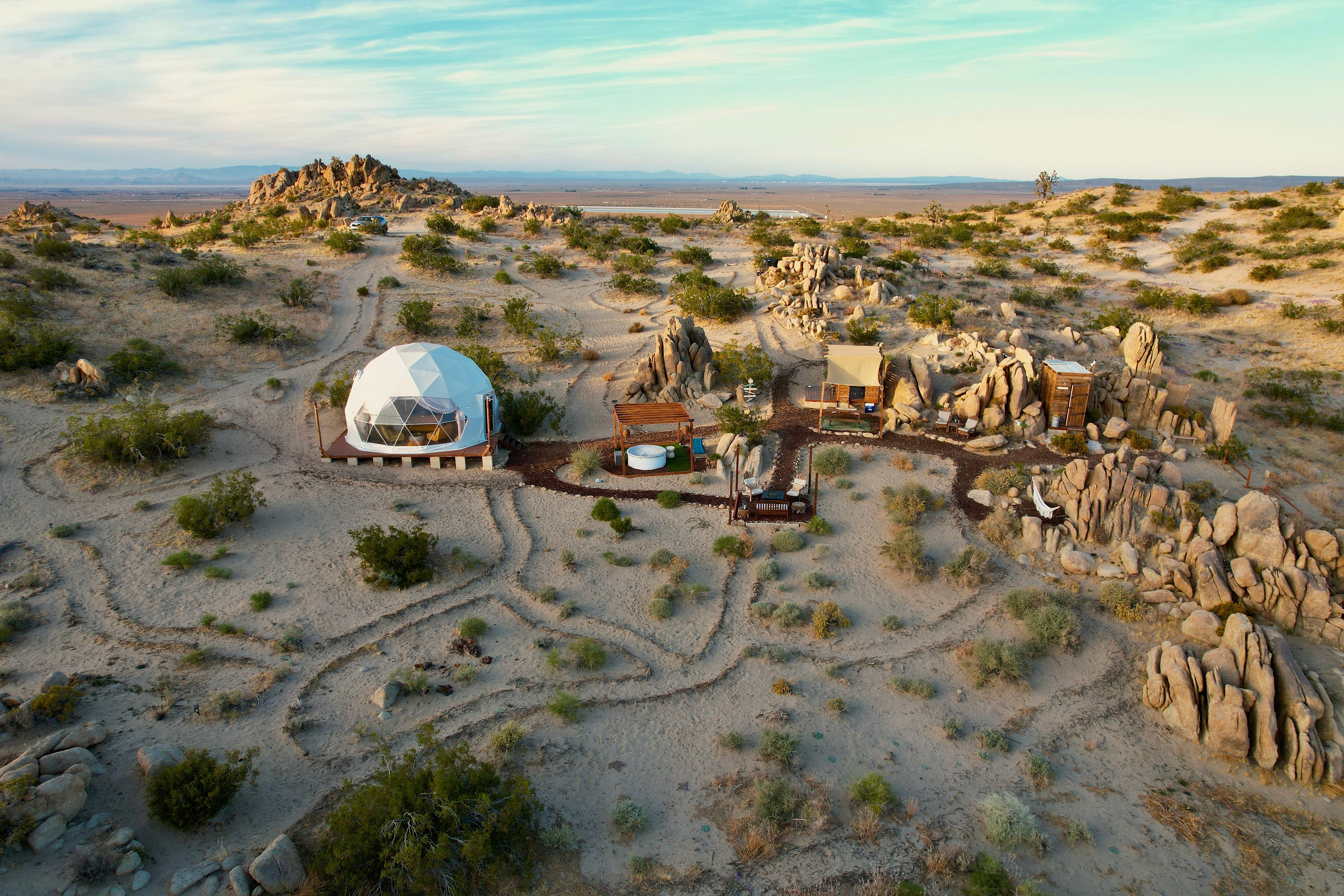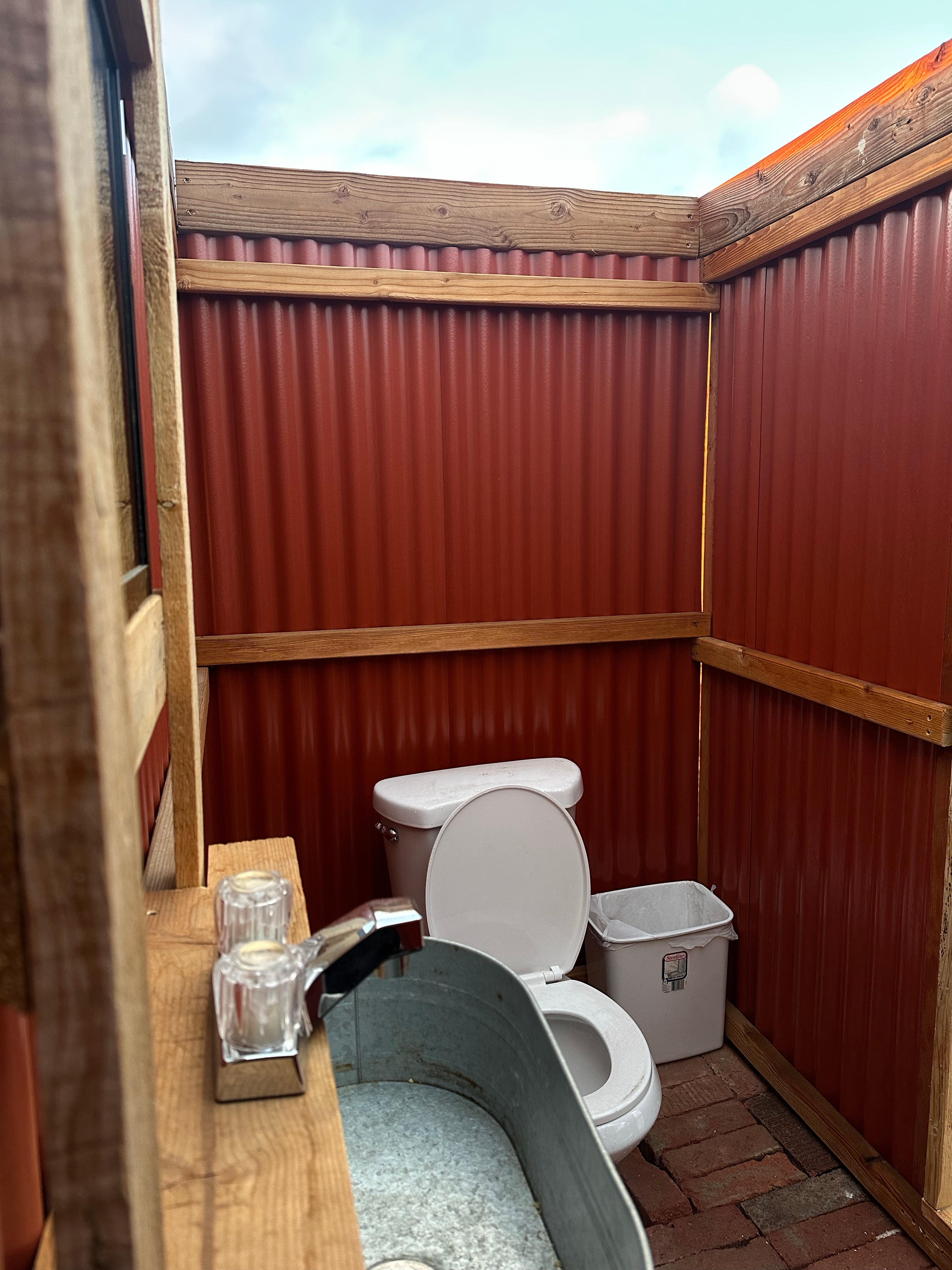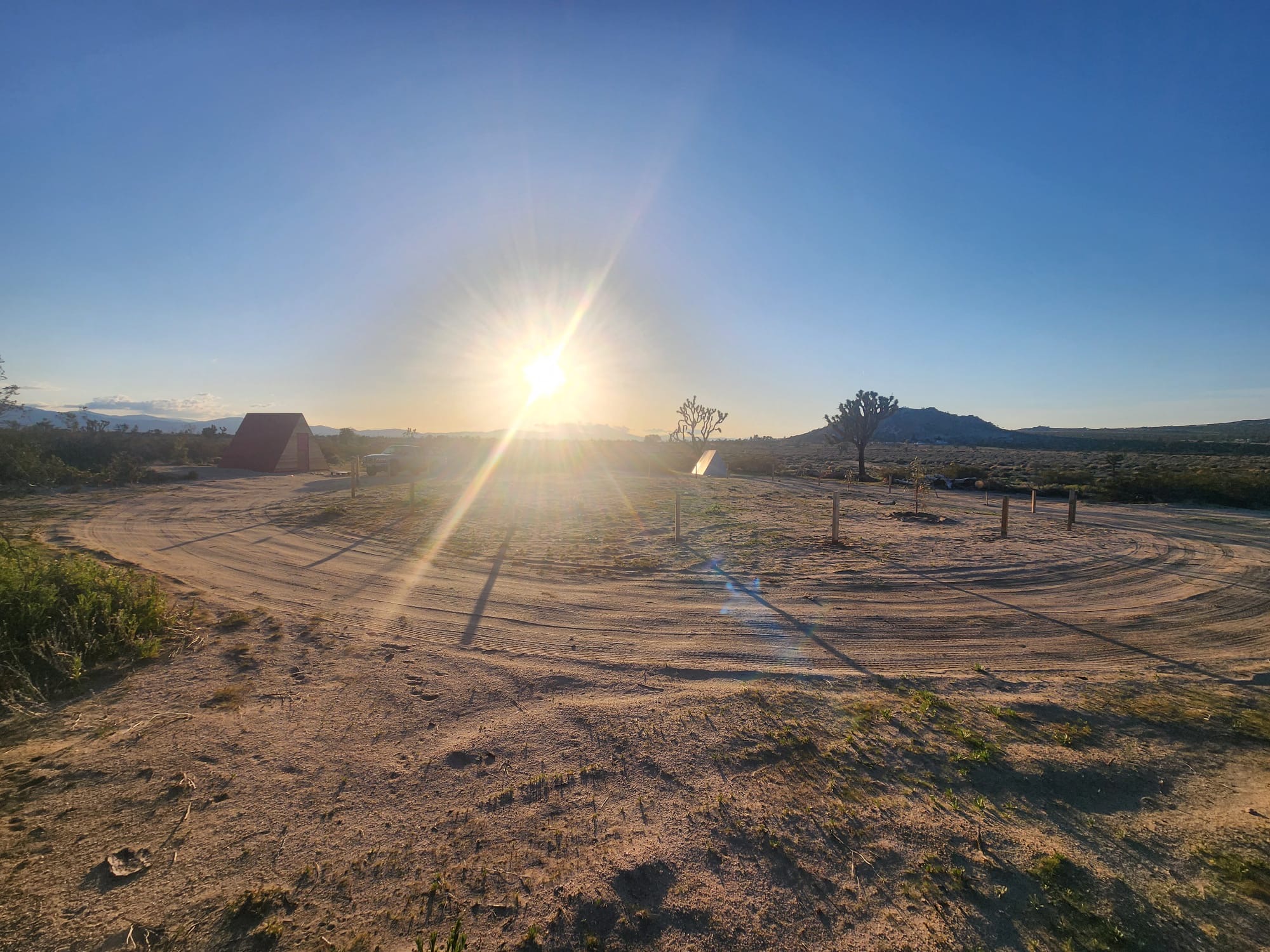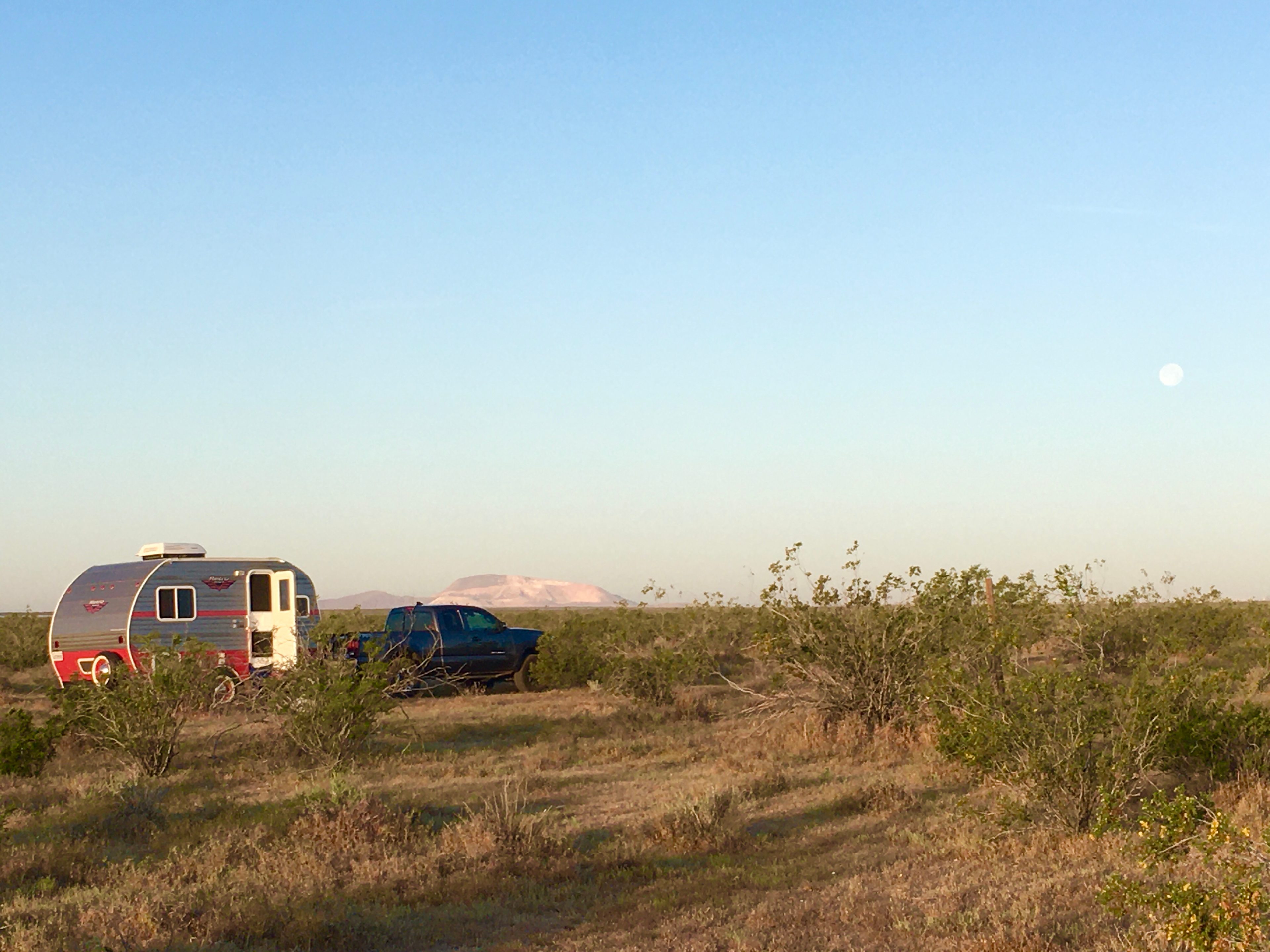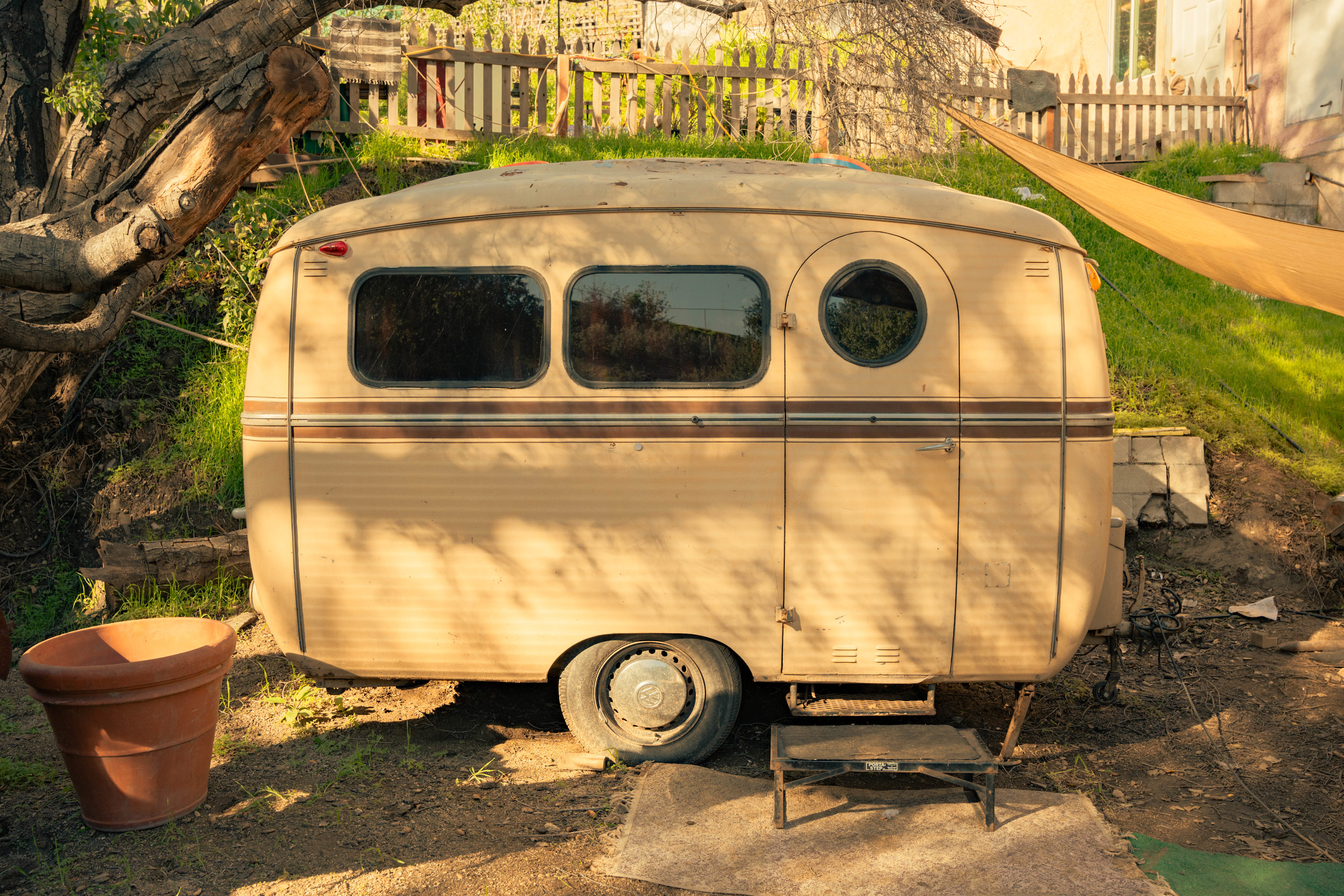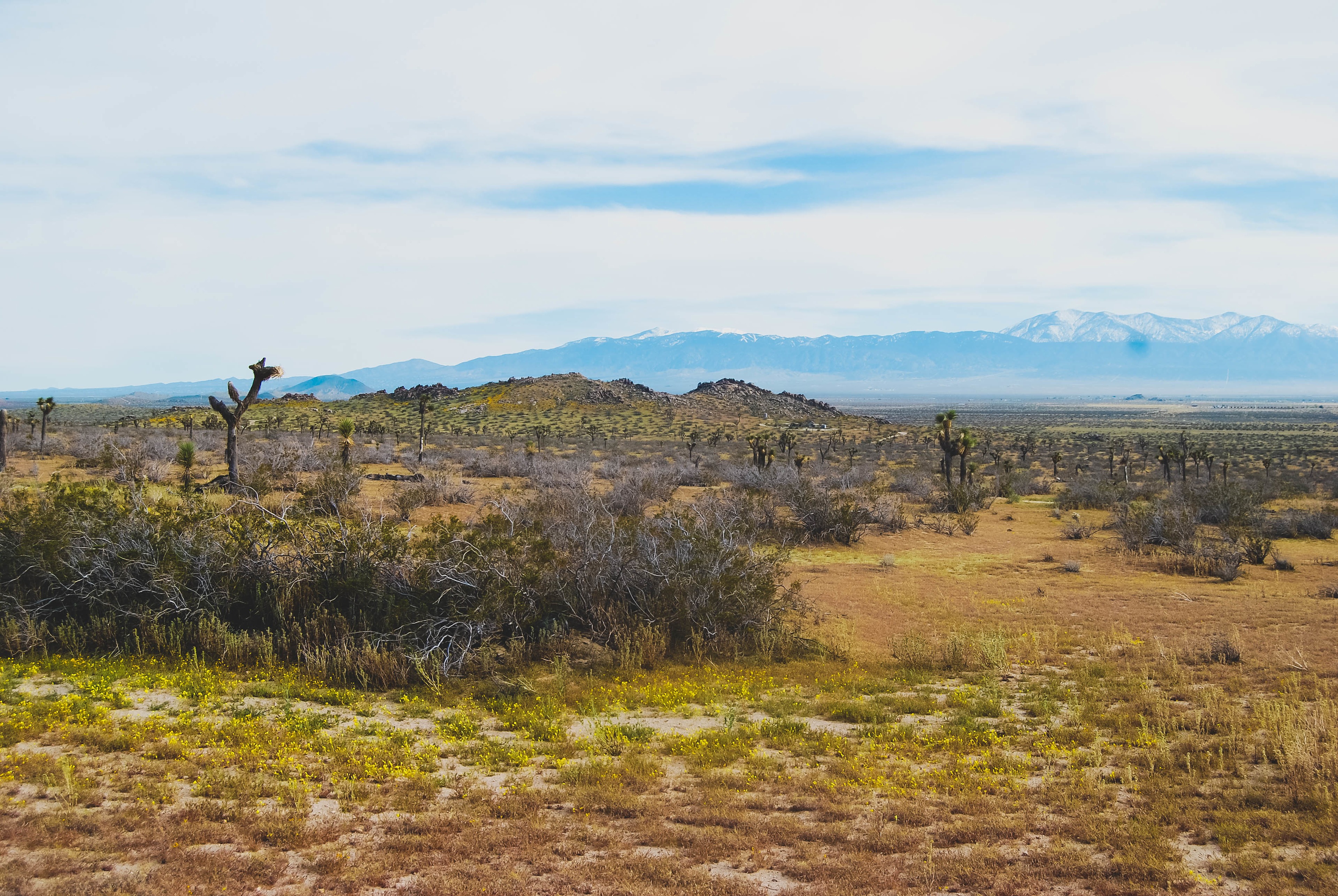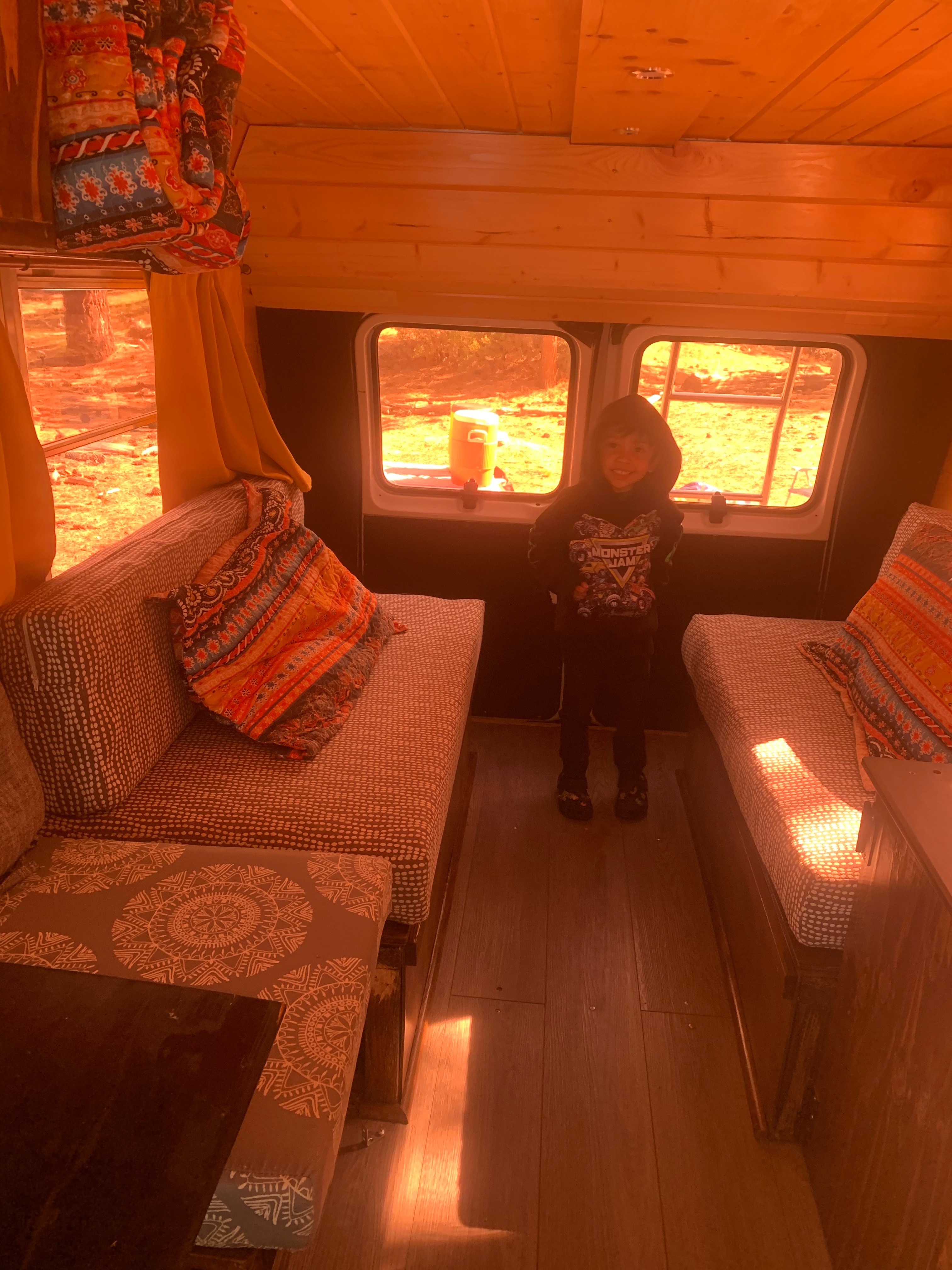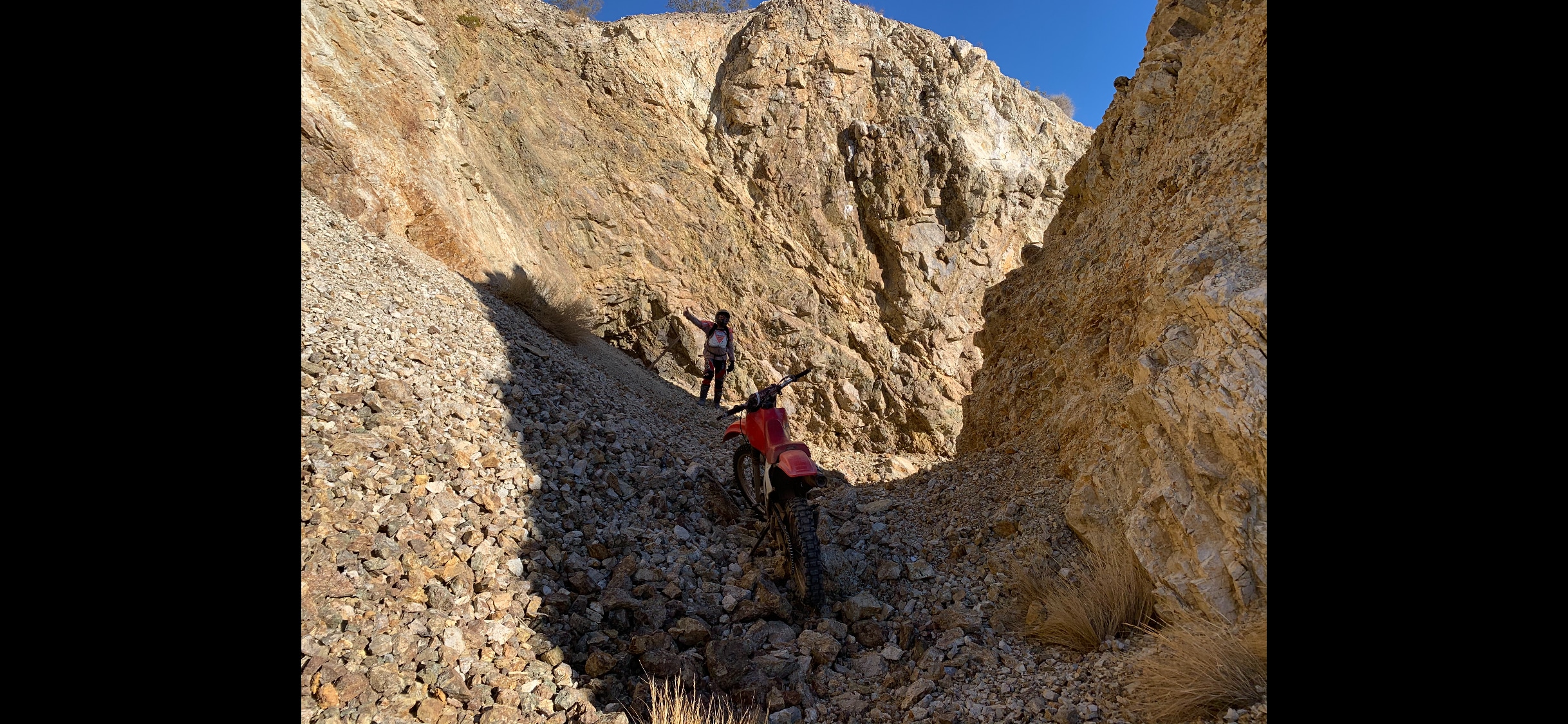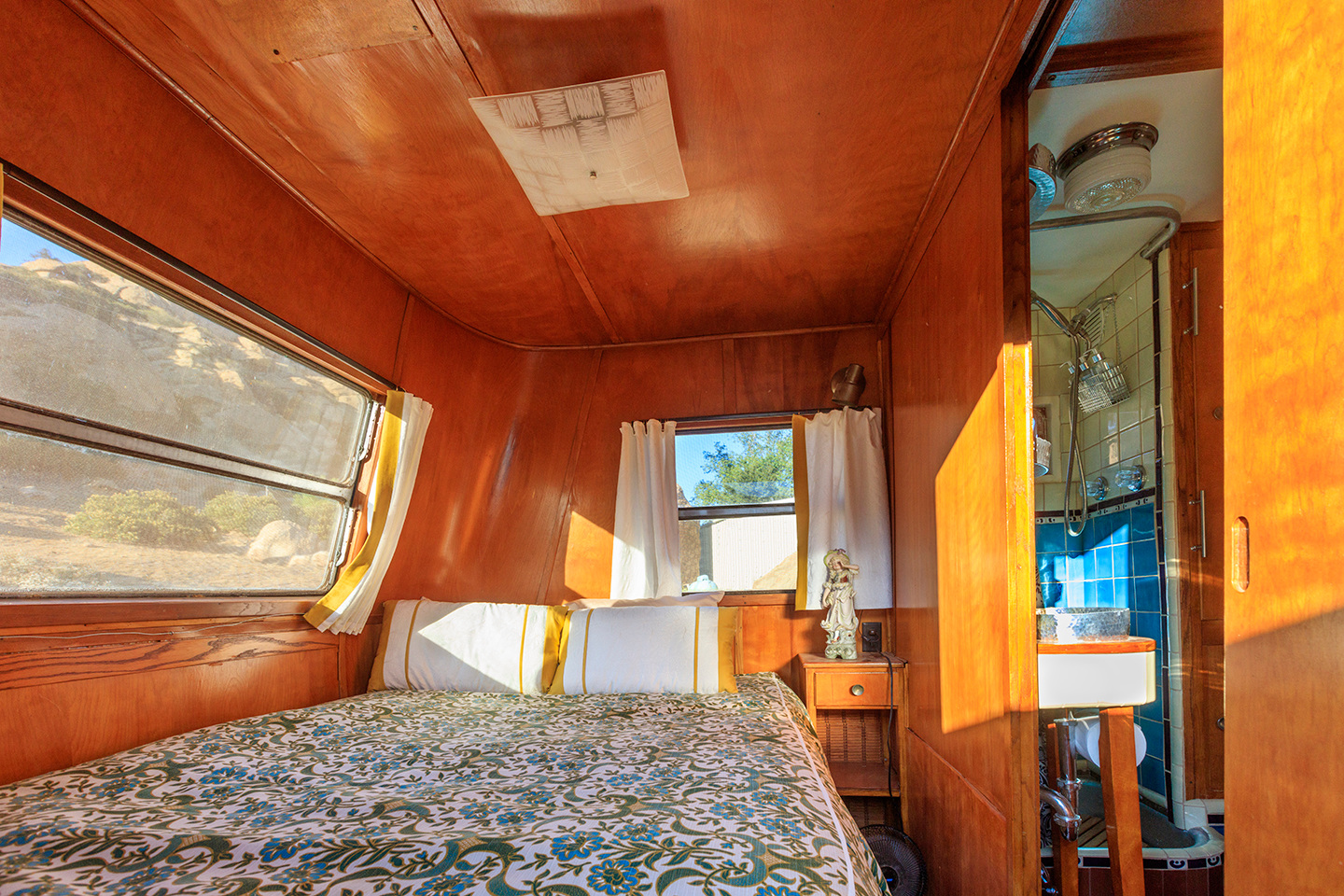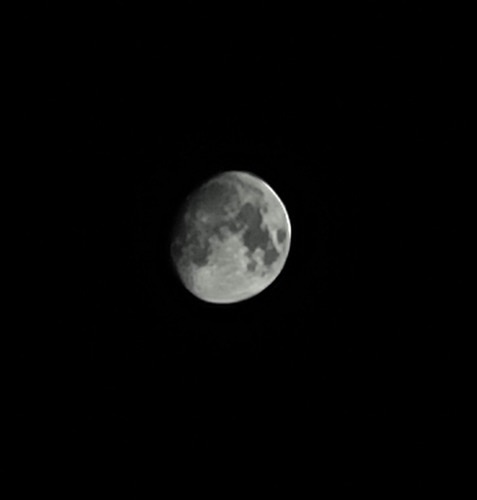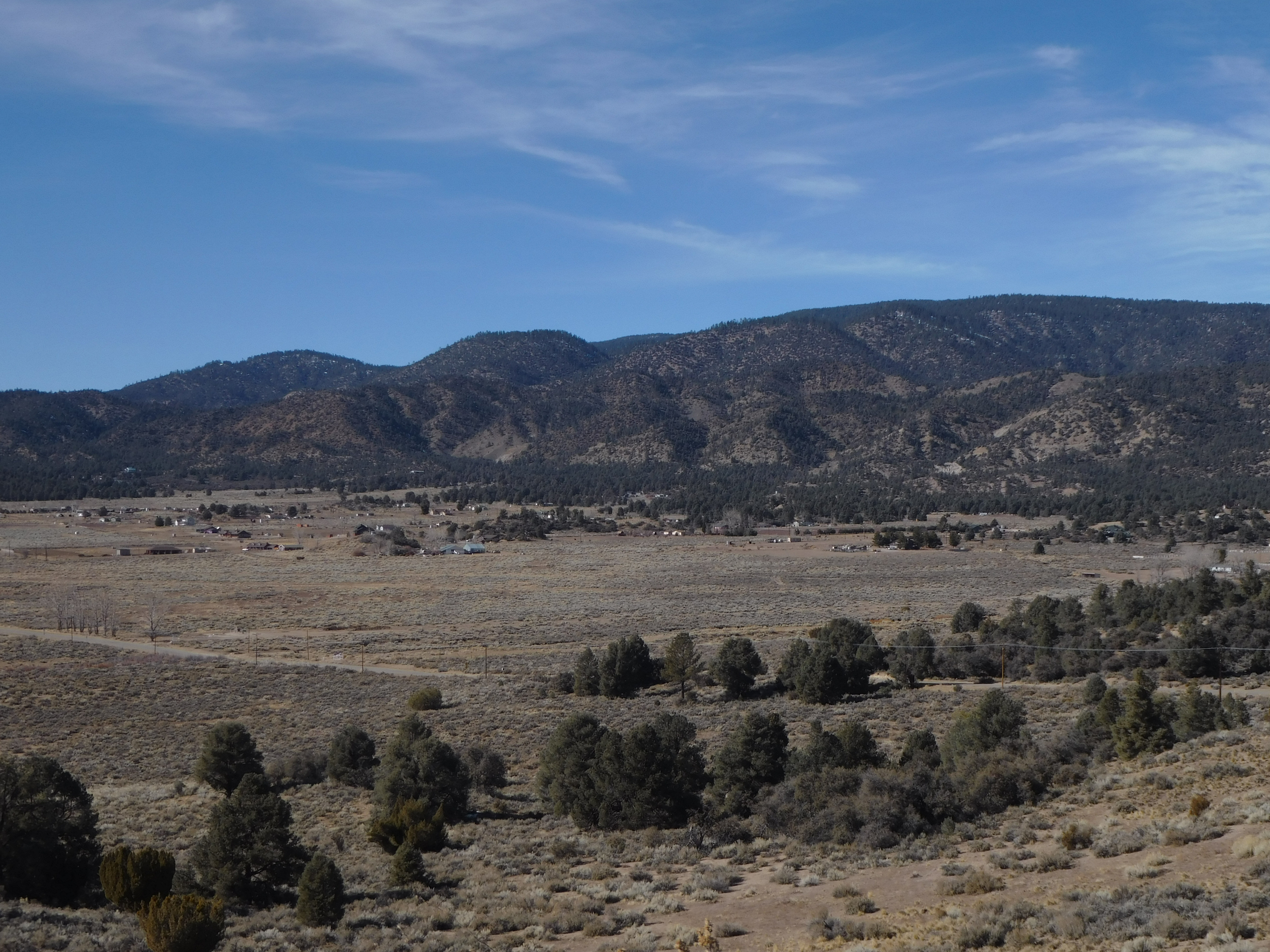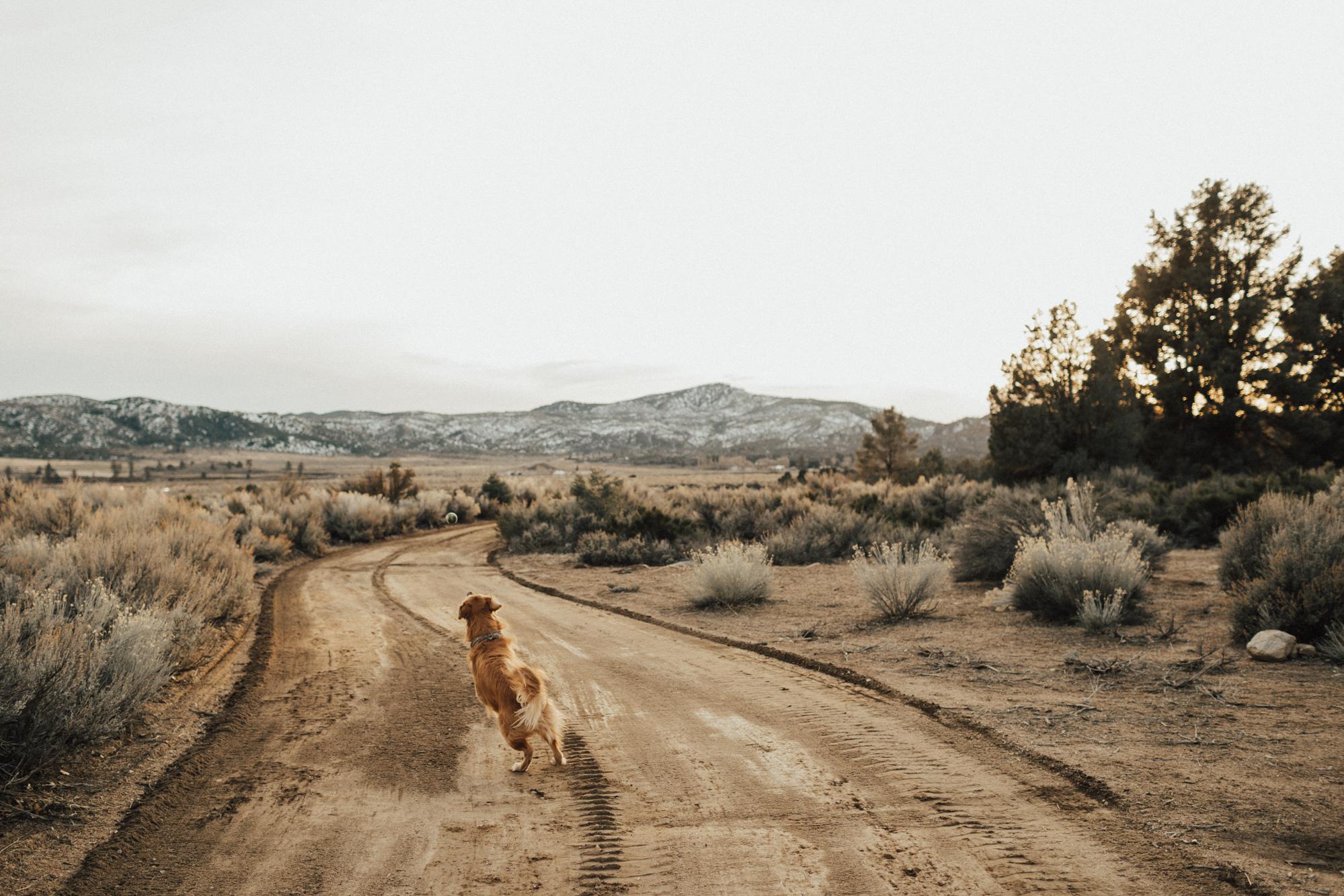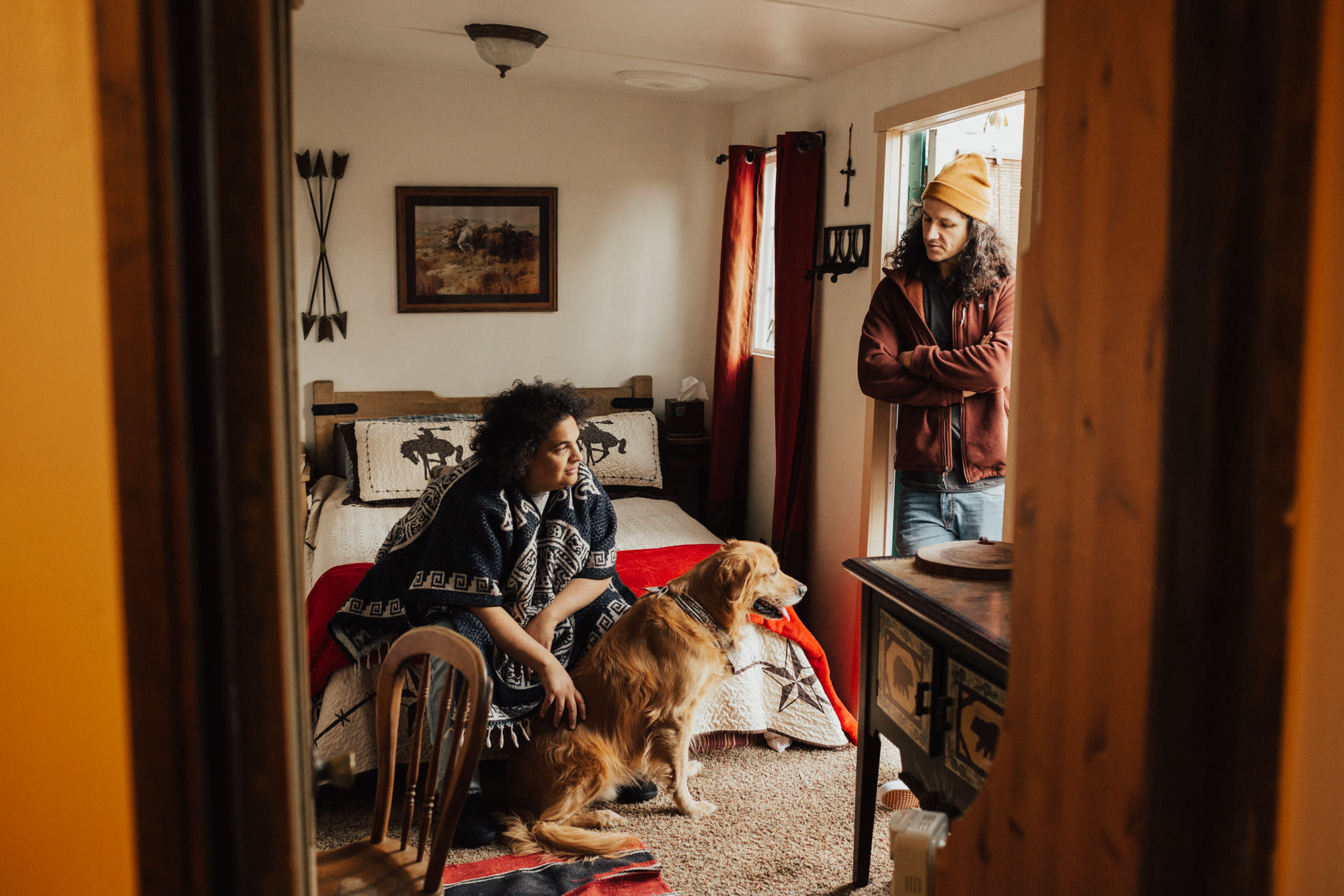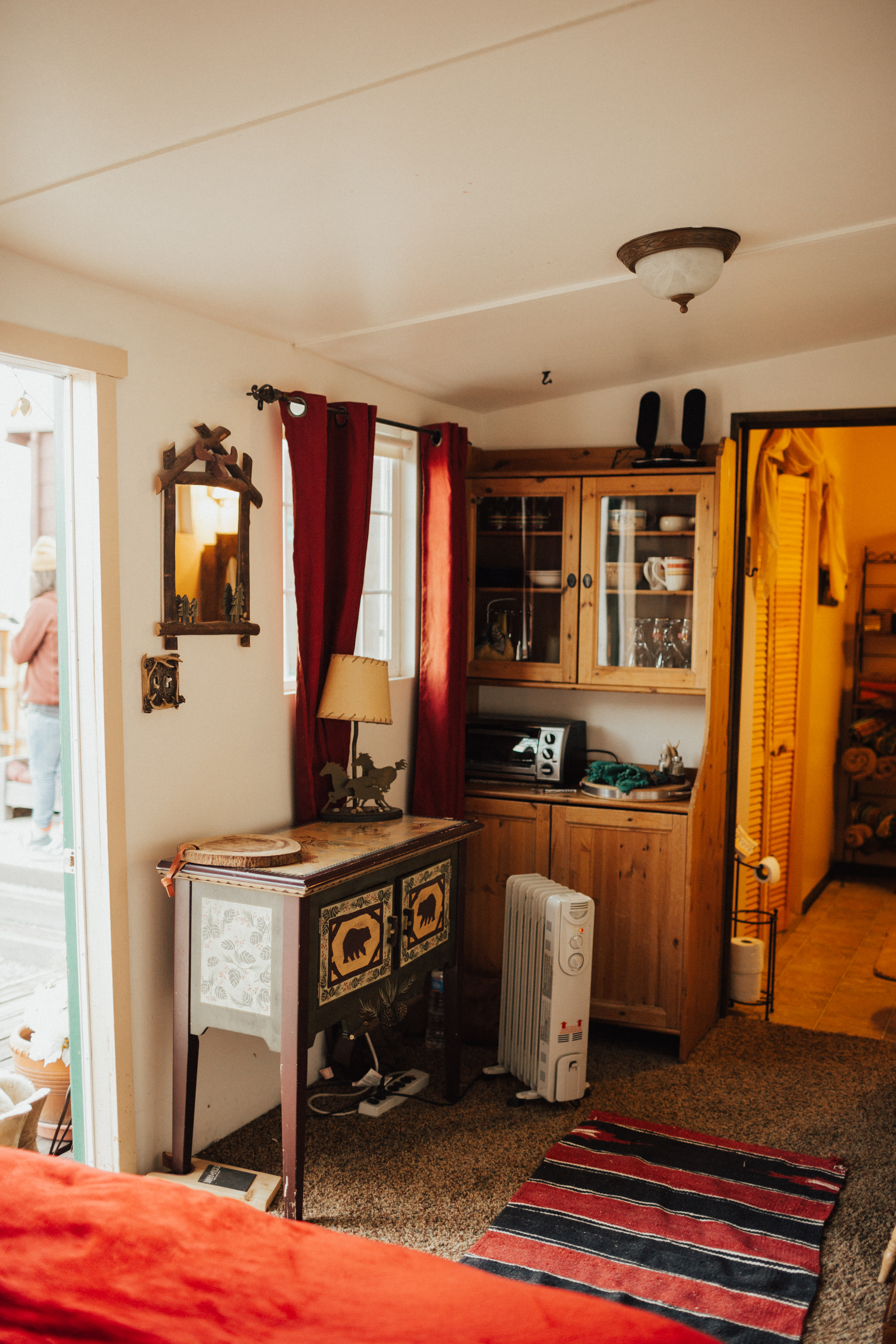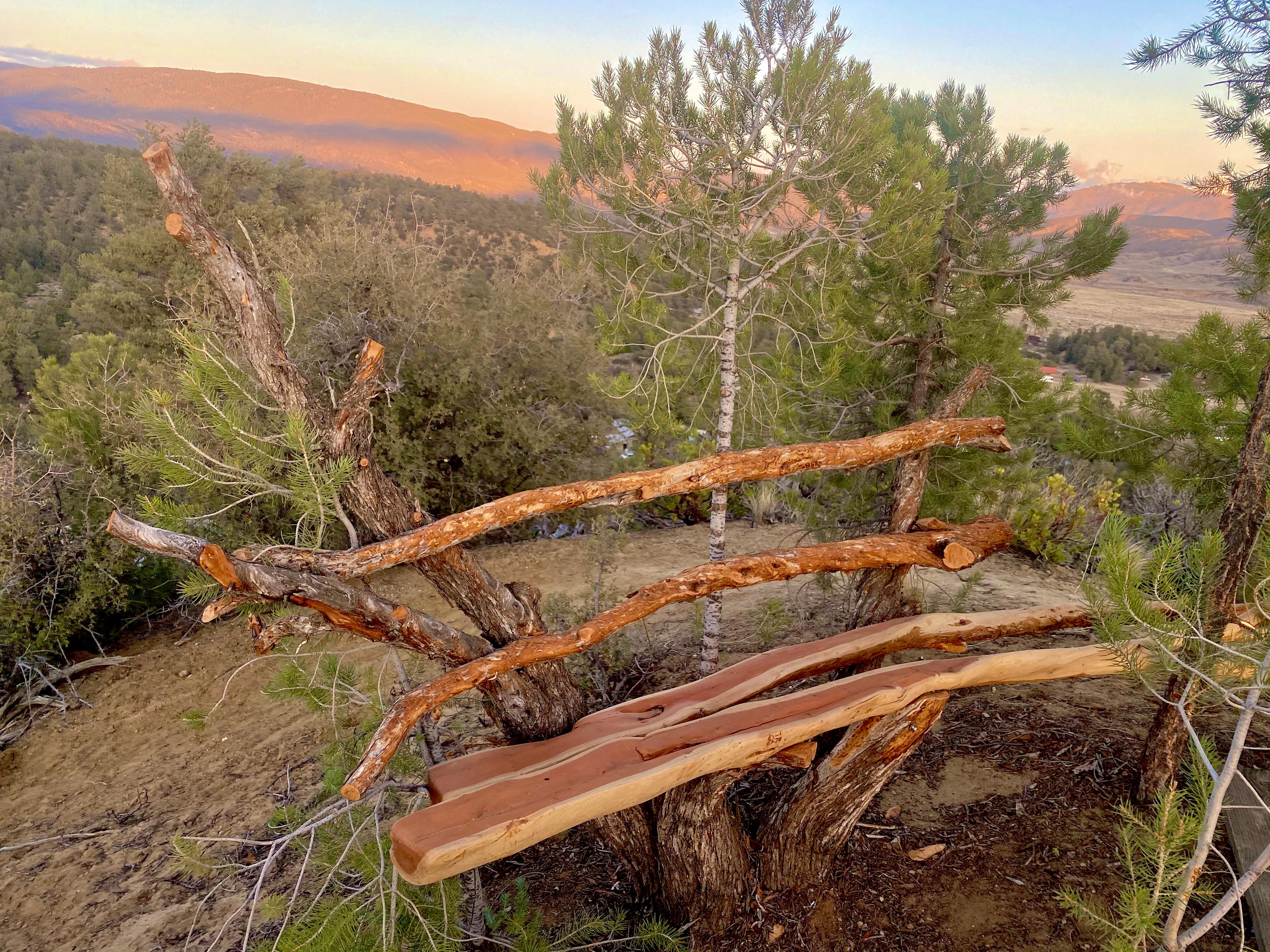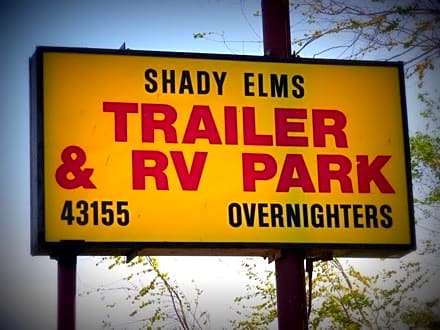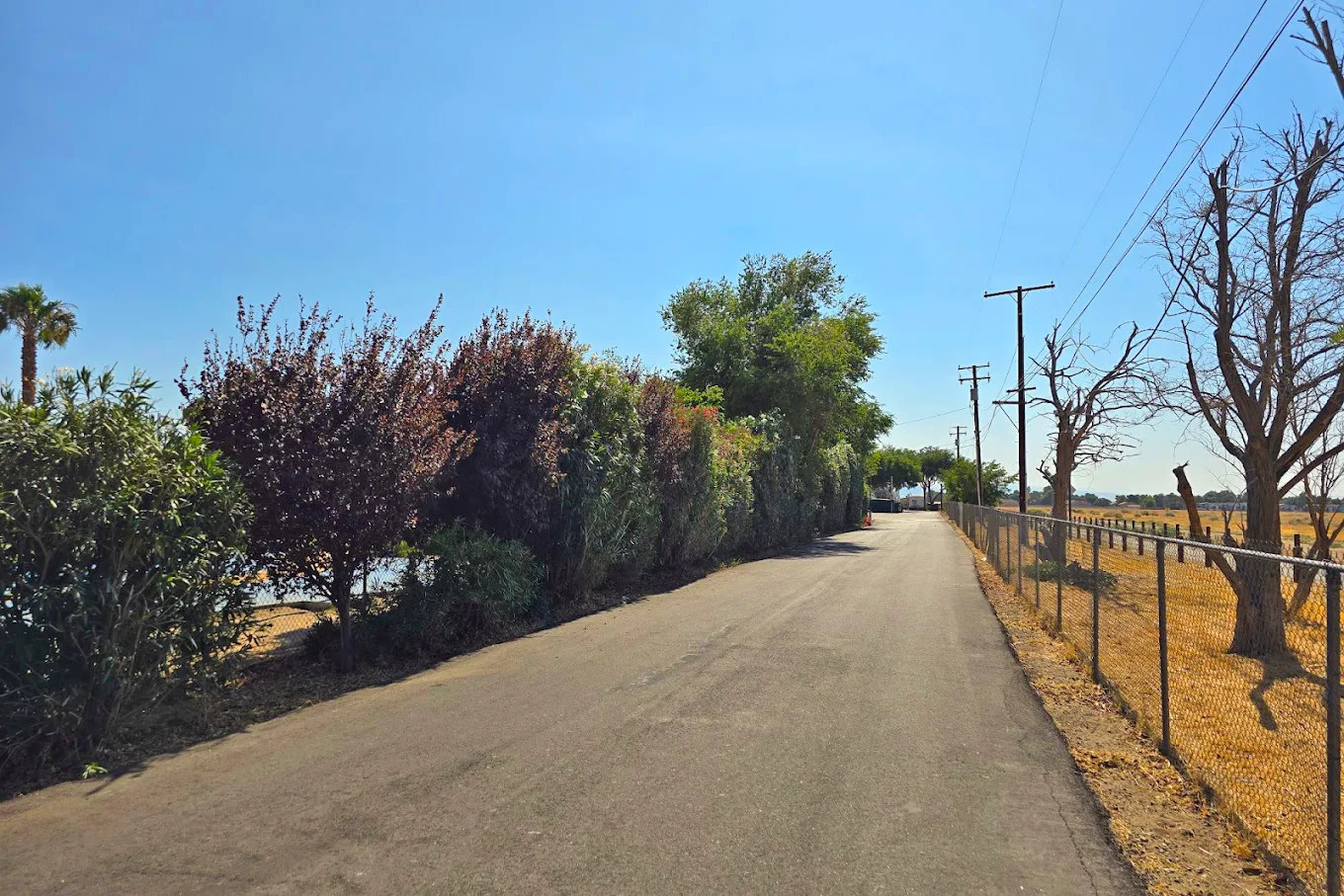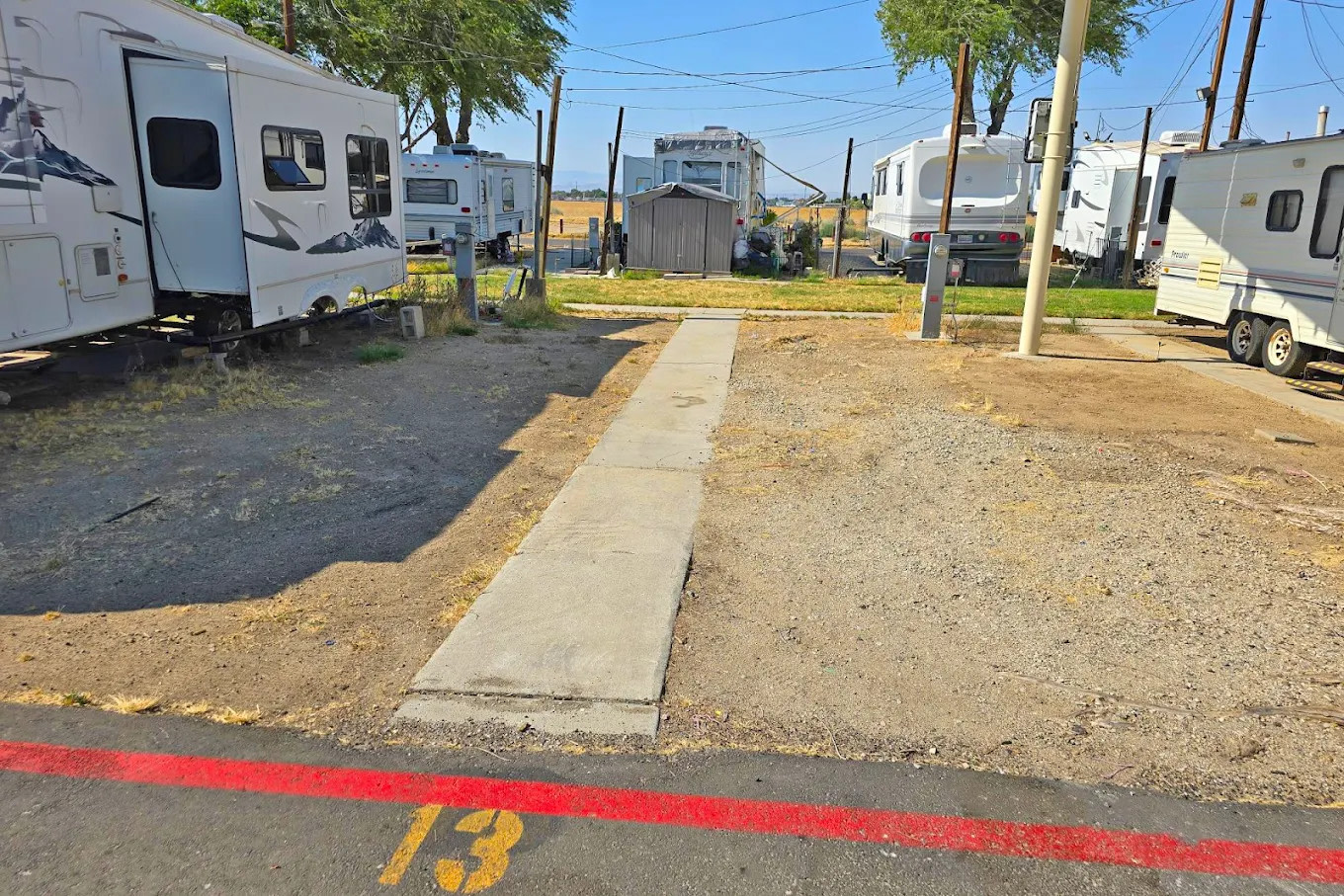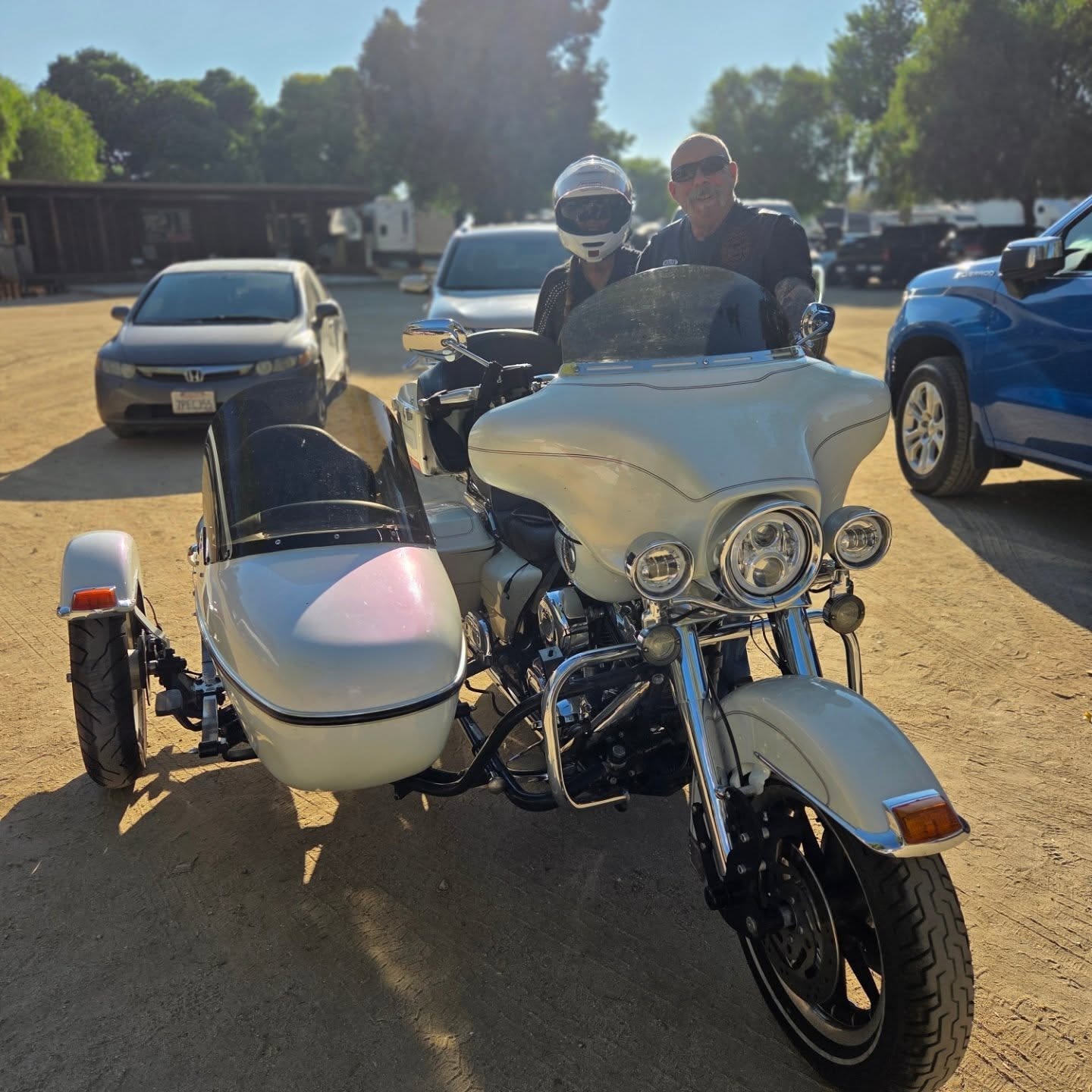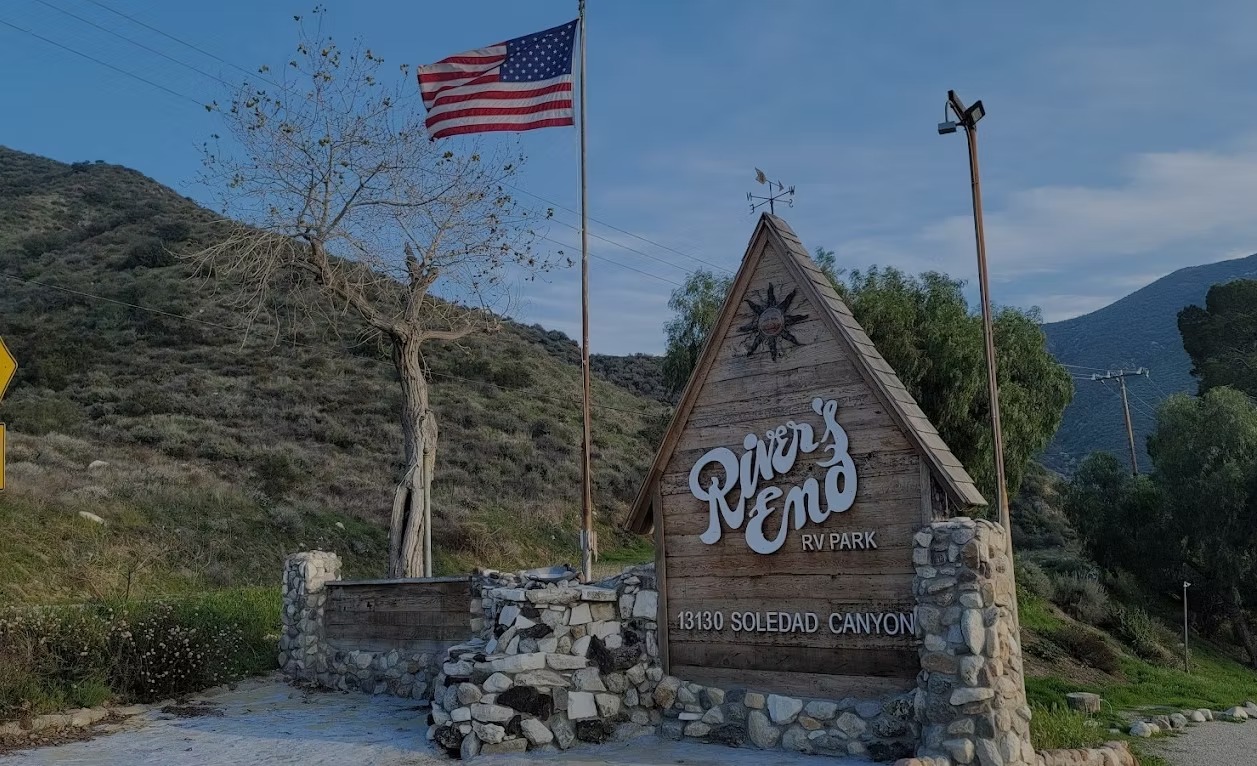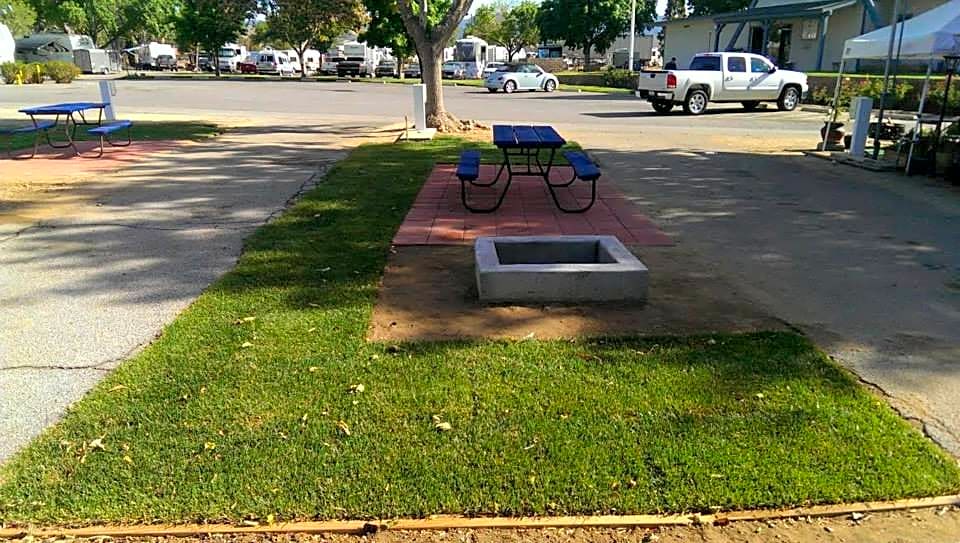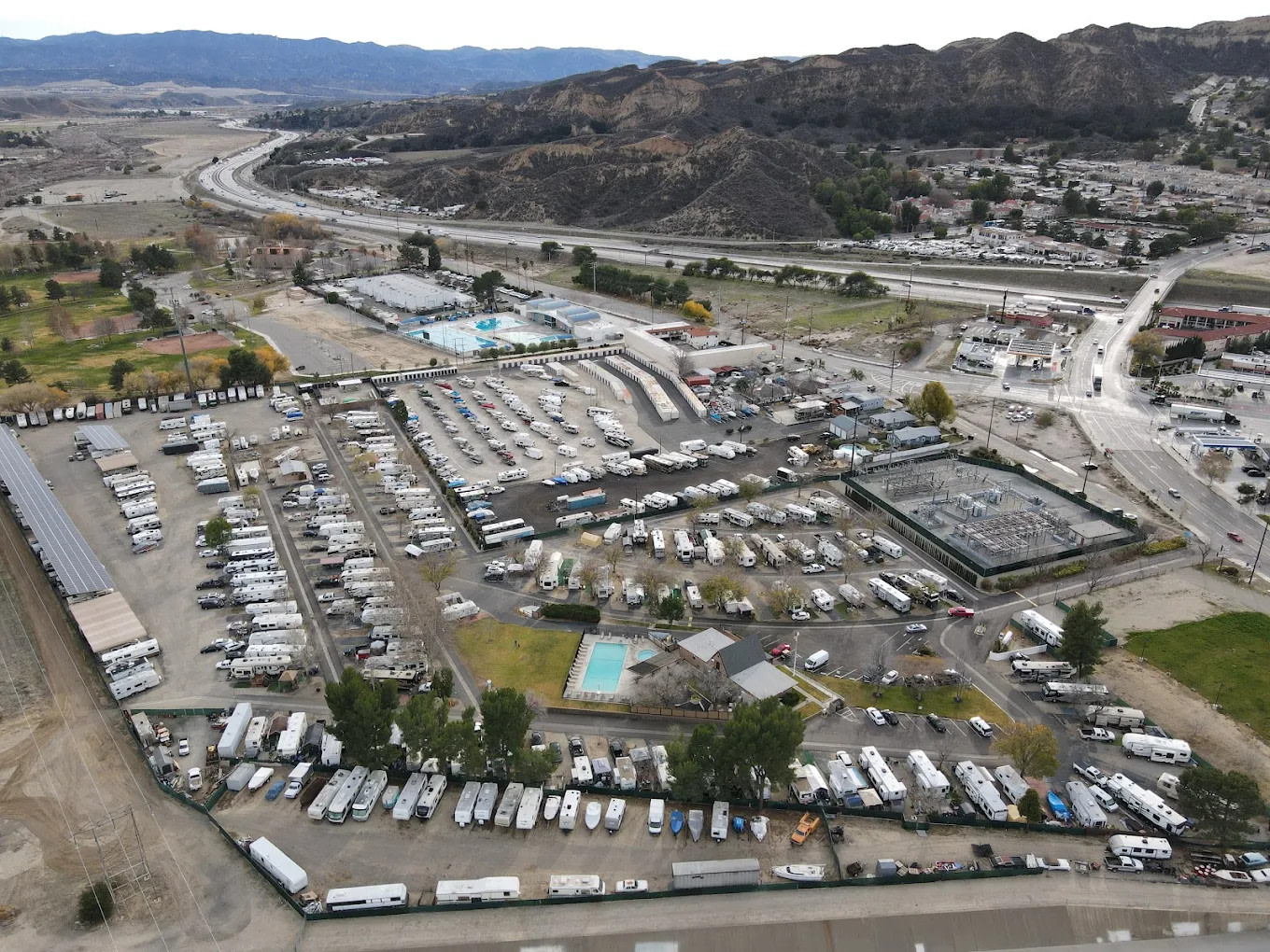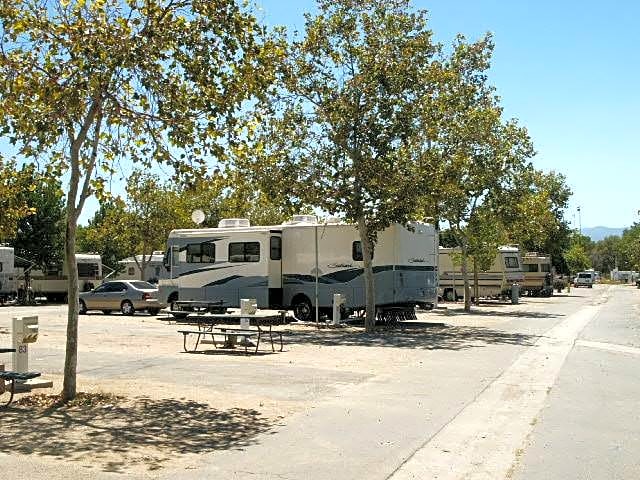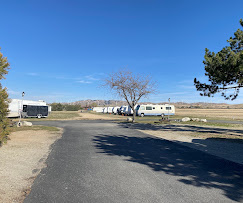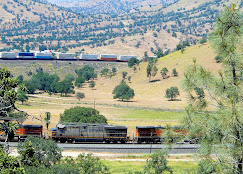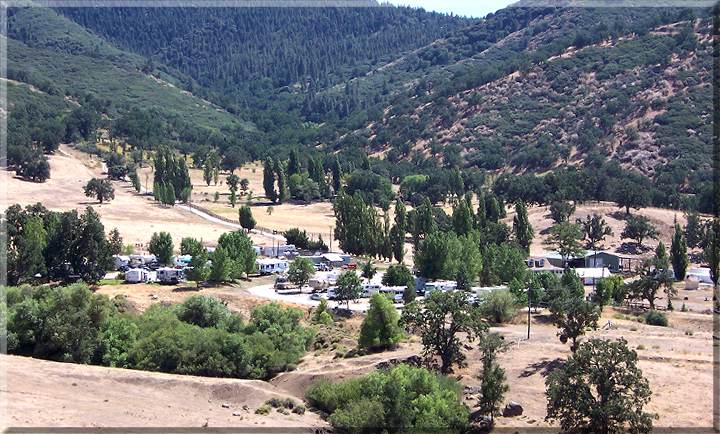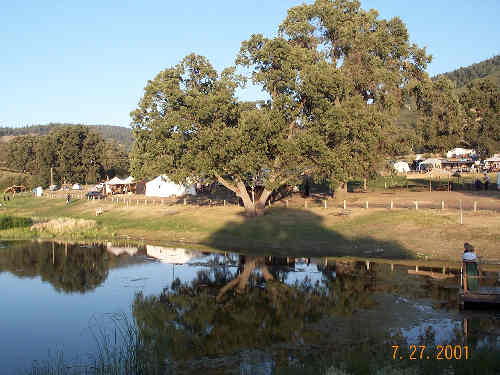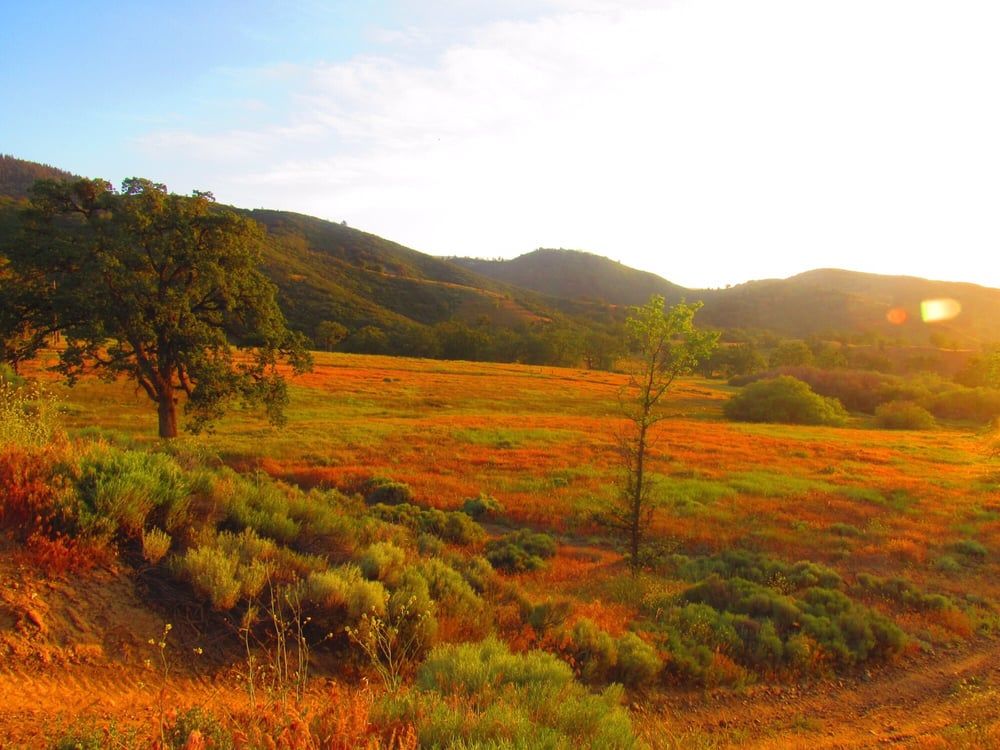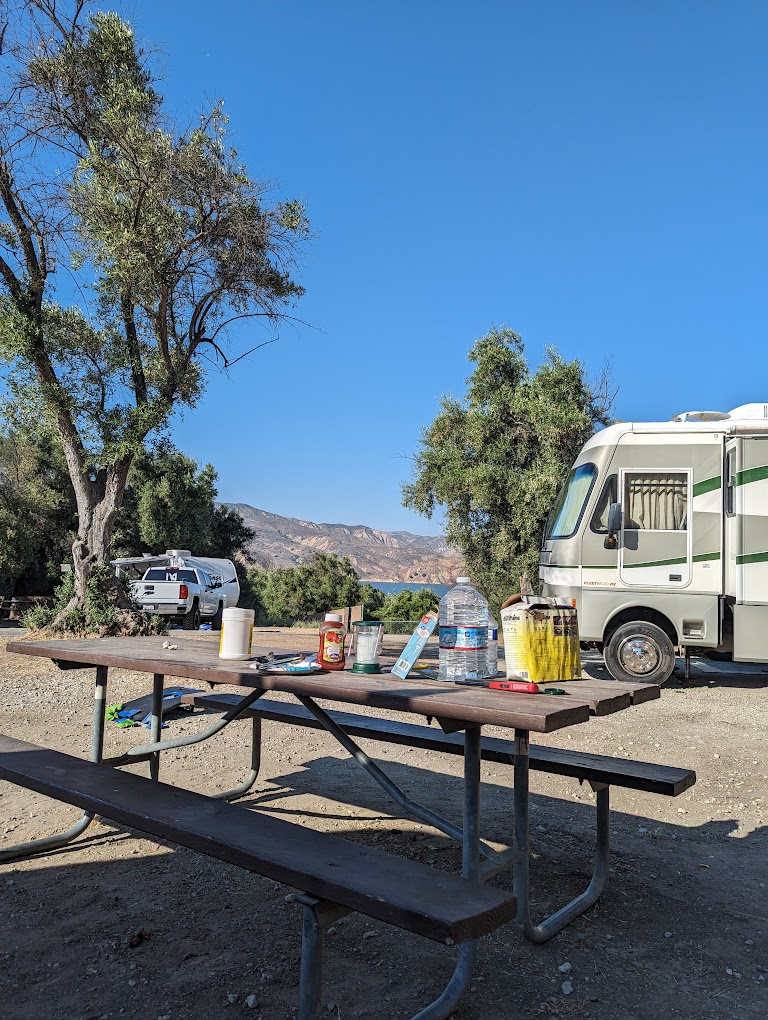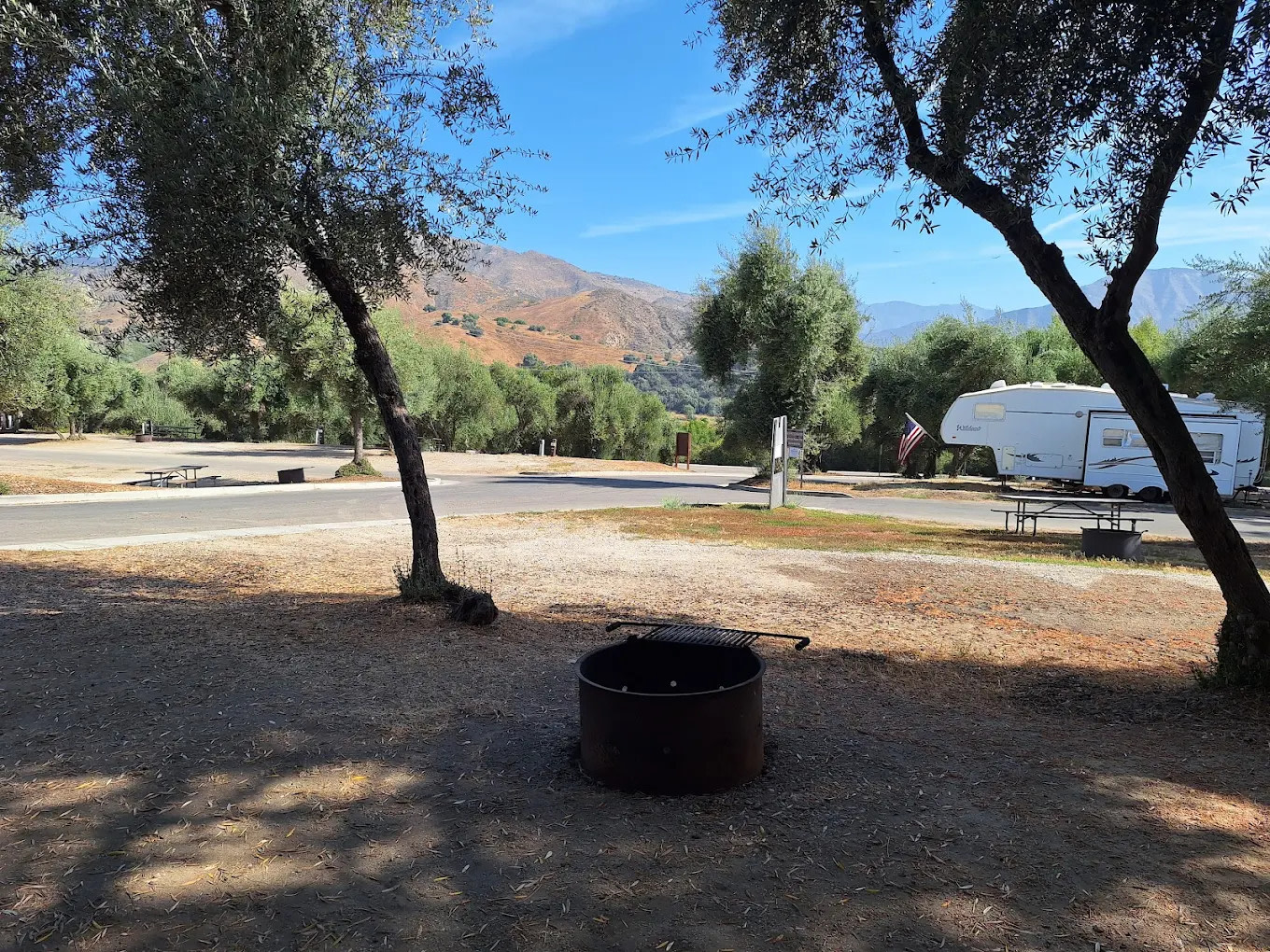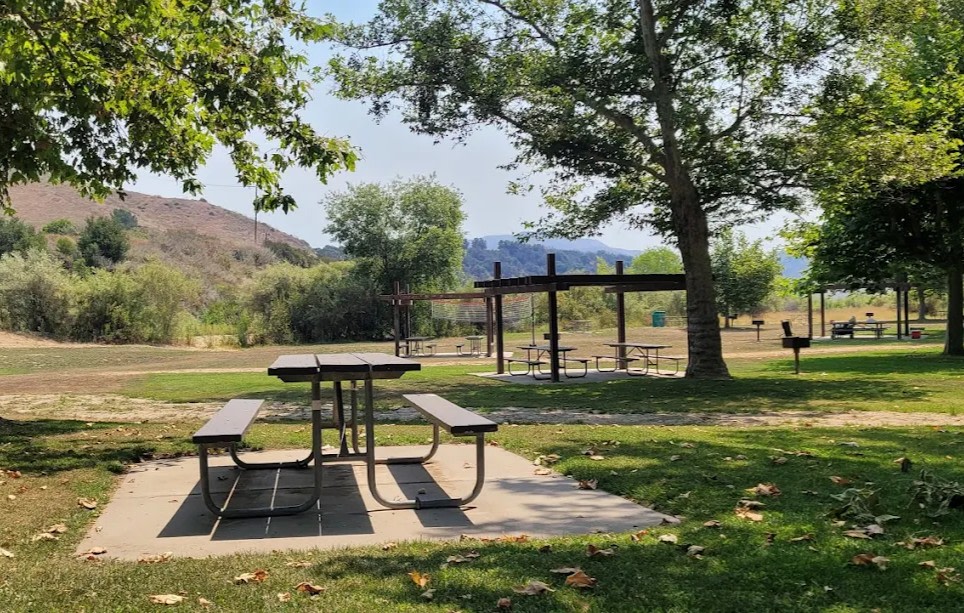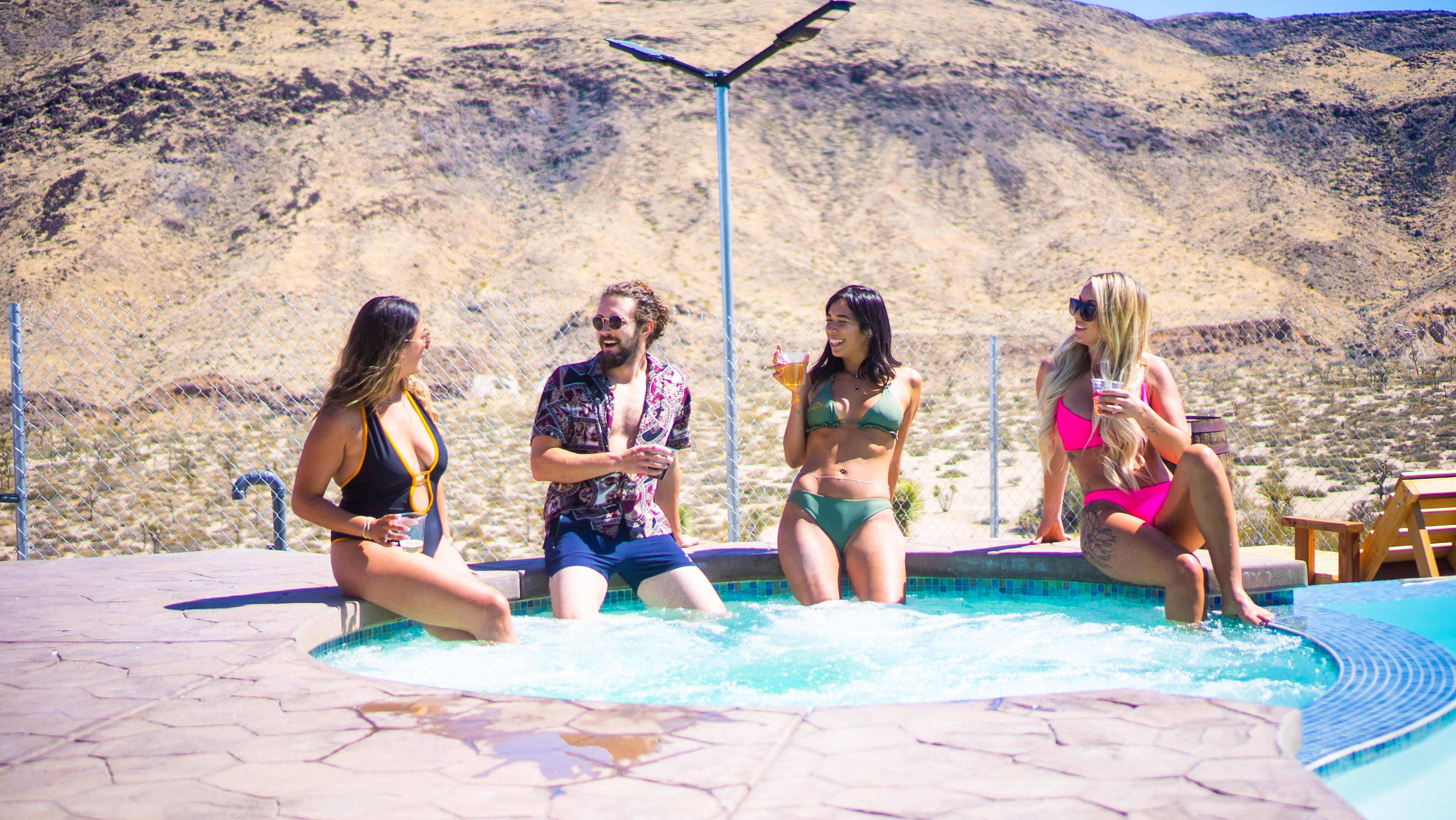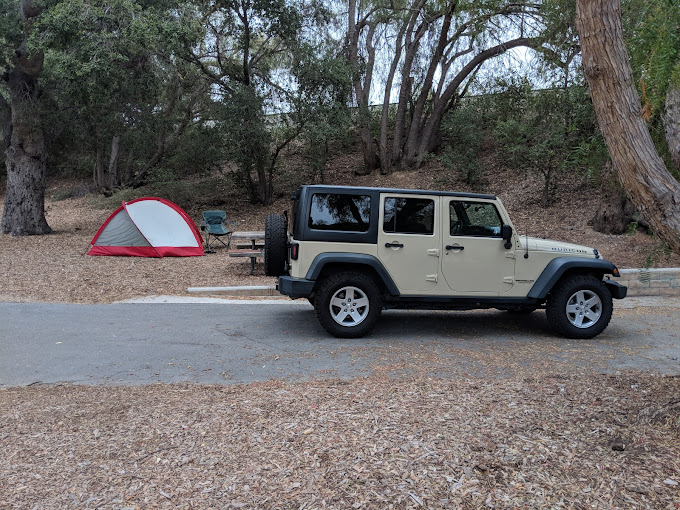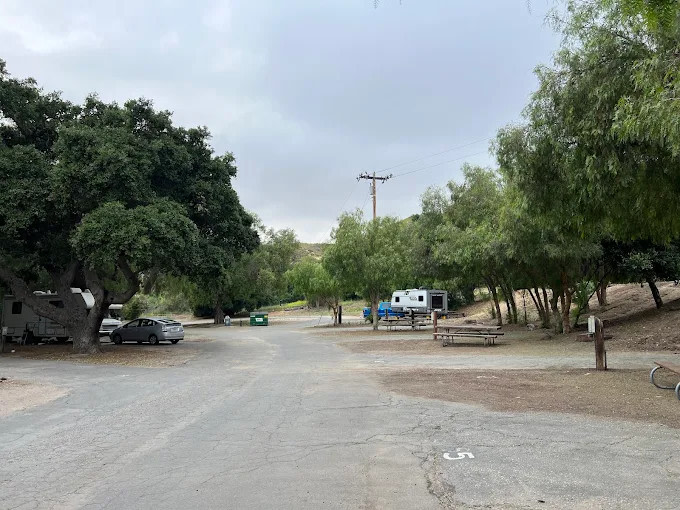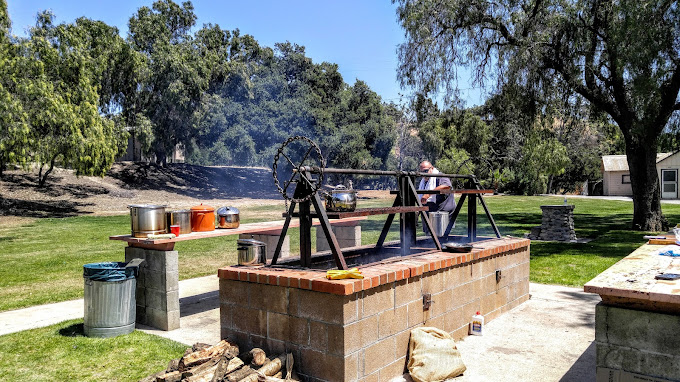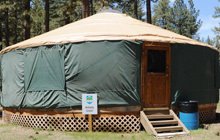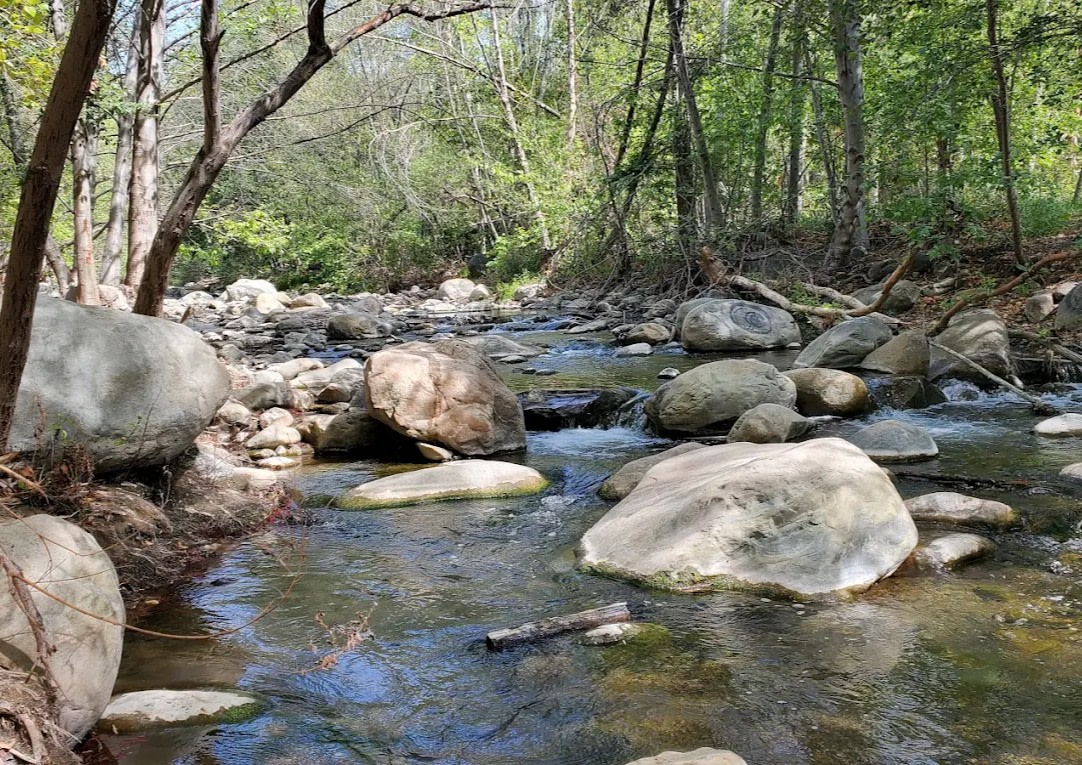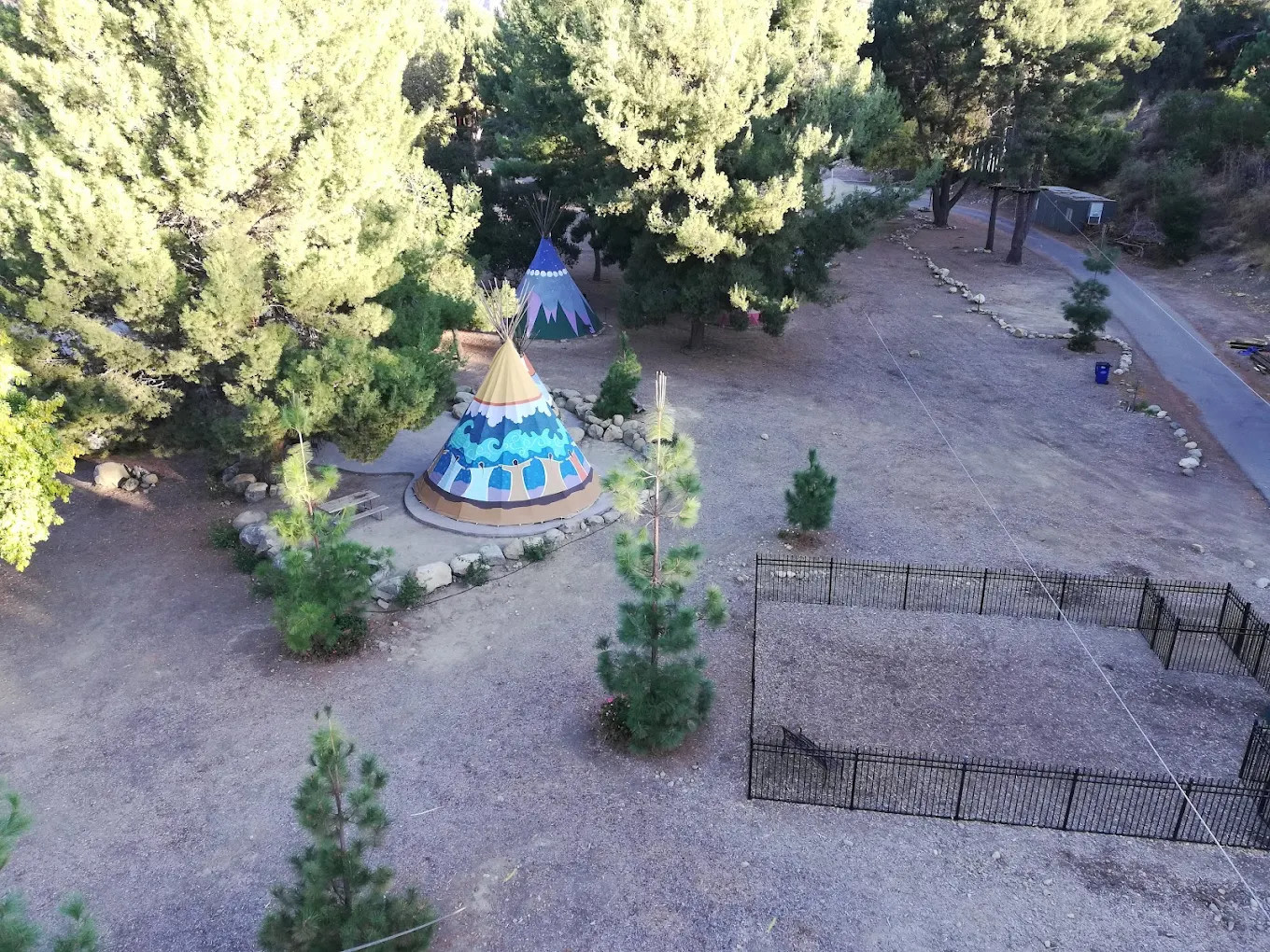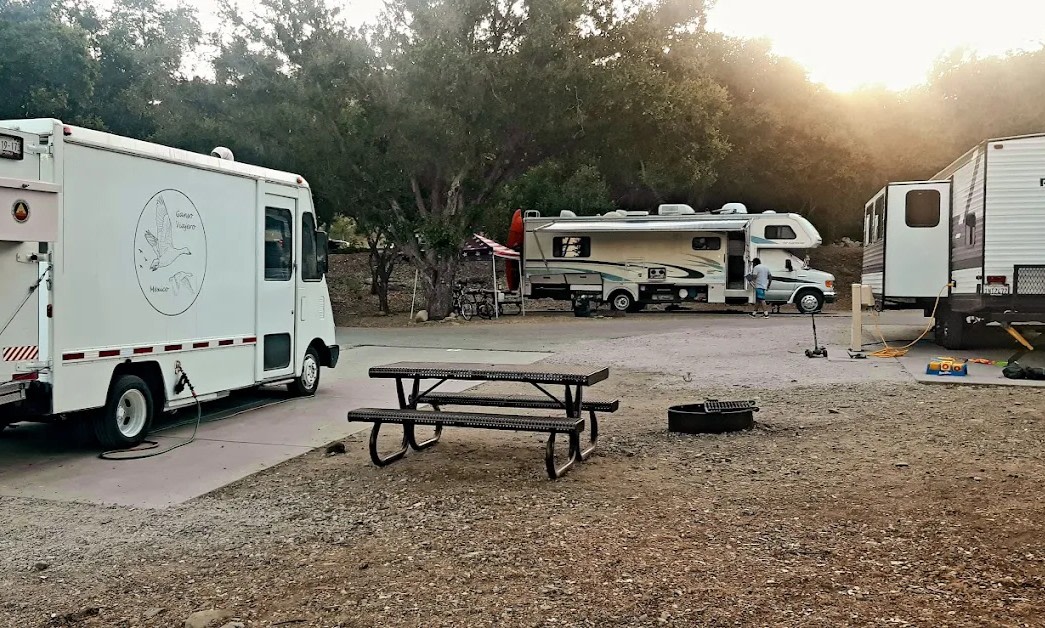37mi from Antelope Valley California Poppy Reserve State Natural Reserve · 1 site · LodgingWith a combination of spectacular view and luxury camping, the "Tiny Tiki Retro Hideaway" is a unique glamping experience. Relax and retreat on a sandstone mesa, where nobody will find you at this extraordinary get away. Our 1954 vintage retro-tiny-house-on-wheels, furnished patio, and a shady gazebo offer an unforgettable highlight of your travels.Please read entire listing and rules. No smoking, no pets, no children, guests must have a car of their own or a rental car. No open fires of any kind: grills, candles etc.Michael and Julia bought their property in Chatsworth Lake Manor in 2011. They remodeled their home into a Poquito Hacienda. In 2016 they bought "Gypsy" the 1954 Spartan Manor trailer and brought her from New Orleans. It took 3 years to create the special hideaway. Michael and Julia are both self employed and they have 2 large dogs, Bella and Loki who live with them in their home right near the hideaway. They love gourmet cooking, travel, hiking and sailing. Living with a beautiful view and each other is their dream come true!Learn more about this land:"Gypsy" the Spartan Manor vintage 1954 24' foot aluminum trailer welcomes up to 4 people. Located high on a cliff in a private neighborhood, Tiny Tiki Retro Hideaway is serene and romantic. With a combination of spectacular view and luxury camping, the "Tiny Tiki Retro Hideaway" is a unique glamping experience. Relax and retreat on a sandstone mesa, where nobody will find you at this extraordinary get away. Our 1954 vintage retro-tiny-house-on-wheels, furnished patio, and a shady gazebo offer an unforgettable highlight of your travels.Please read entire listing and rules. No smoking, no pets, no children, guests must have a car of their own or a rental car. No cable TV. No open fires of any kind: grills, candles etc.Far from crowds and traffic is the inimitable Tiny Tiki Retro Hideaway. Open sky, 360 degree dramatic valley and city views and sandstone cliffs will surround you. . Unplug and enjoy the view, a great novel or your travel companion.See Pictures! Design Driven Travel! Ready to make sweet memories ??Please check map! Where is Chatsworth Lake Manor? Located in NW San Fernando Valley, it feels remote and for some is too remote.... yet we're close enough for exploring Los Angeles and Ventura. Zip code 91311."Gypsy", our 24 ft. 1954 Spartan Manor vintage travel trailer has a private double bed, kitchen and a bathroom with shower. The kitchen has a gas stove top, microwave, toaster oven, coffee maker, refrigerator, pots, pans, cutlery and vintage dinnerware. A custom daybed, dining area and library are in the forward "observation lounge".Outfitted for private, luxurious relaxation the Tiny Tiki Retro Hideaway large cliff-top patio has 2 chaises, 2 armchairs, a loveseat and dining table. Take a nap, enjoy cocktails, tea, coffee or dinner al fresco. The gazebo, with an outdoor double bed is available May 1st to November 1st, or until the rains arrive, then it is tarped. Living spaces are fully electric and have A/C. 1 small bathroom only.Due to extreme fire hazard, no smoking allowed ANYWHERE in our tinder surrounded neighborhood. You must travel 1 mile to local store to smoke. Vaping ok outside only. Details, other rules, please read all.Excellent wifi wireless reception provided, 8mb up, 4 mb down, which may not be what you are expecting or what you are accustomed to. Smart 24" TV. Due to no phone land-line we are somewhat off-grid.The 1 1/2 mile gated driveway is a steep old paved road. Not recommended for road sissies. Gate code access provided. Close to 118 major freeway, and near north end of Topanga Blvd. Free outdoor parking.IT IS So. Cal., (1 hour from Los Angeles) after all-- so expect Summer Heat!!) This Desert luxury camping experience is sited at natures doorstep. it often reaches over 104 in August and September!Did you always want to sleep in an Airstream? They are the Mercedes' of the vintage trailer world. Spartans, like an old Bentley, are more collectible due to unrivaled mid-century design, mono-coque aircraft construction and beautiful real wood paneling and cabinetry throughout. Ours is restored and retains its original beauty and function.All seen only here for our guests delight, Tiny Tiki Retro Hideaway is furnished with one of a kind designer textiles and ceramics, real 1950's decor, and many irreplaceable custom items sourced from recycled, reclaimed and repurposed materials. Please be careful in the Hideaway. Enjoy it respectfully as if it were your own Grandmother's treasured getaway.Although well equipped, please remember "Gypsy " is about the size of a private train car. The bed is a double size. (75" x 54" ) Cozy living quarters and 'character' are part of the experience, like a Tiny House.Nearby: In historic Chatsworth town restaurants, bars and shopping are 3 miles drive away. Downtown Los Angeles and Hollywood are 27 miles away. Disneyland is 65 miles away, Universal City 26 miles, and Malibu beaches are 24 miles away; timing is all depending on traffic. Stoney Point world class rock climbing is 15 minutes, Magic Mountain 6 Flags and the Reagan Library are 1/2 hour away.IMPORTANT:If you choose this location you must drive a car of your own or a rental. No Ubering. No deliveries. PLEASE NOTE GOOGLE MAPS does NOT get YOU to our property! We need to meet you 1 mile away, so you can follow us up here the 1st time..There are 6 local watch dogs: 50 yards our Bella and Loki, 100 yards 1 dog, 300 yards 1 other dog; all are fenced in. You will hear dogs barking during your stay here. We are in a pristine wildlife corridor and there are numerous wild animals all around, including rabbits, squirrels, lizards, coyotes and others.** No Infants, No Kids, No Pets: Children over age 10 only and they must be pre-approved by host prior to booking. Unsafe place for younger children or pets due no containment, no child proofing, wild animals, unfenced cliff and steep terrain. Please tell us before booking if you want to bring your service animal. Due to the nature of the site your SA could be in danger. ** Sorry, No Self Check In. Personal introduction to the Hideaway will be done by us while welcoming you. Your hosts Julia and Michael live next door. We are flexible and your contentment is important to us, so please visit, ask or call if you have any needs or questions. We hope your stay at the Hideaway a.k.a Tiny Tiki Trailer Zone is super comfortable!Rules! : #1 House Rule: Due to extreme fire hazard, no smoking allowed ANYWHERE in our tinder surrounded neighborhood. You must travel 1 mile to local store to smoke. Violators will be asked to leave, and will not be refunded. There are regularly county-wide police enforced bans on outdoor burning of any sort. High fire danger exists during most of the year. There might be a 'red flag' event of sustained high winds (55mph +) or an extreme temperature event (104+ degrees ).# Quiet after TEN PM.# No pets.# No parties.# All guests must sign personal injury/ liability release and rental agreement.# Smoking prohibited indoors or outdoors ie no smoking anywhere on our property. >>>Smokers, >> Please do not request booking.# Not suitable or safe for infants or children. Uneven terrain. Wild animals. Not a contained or a child-proof environment at all.# No wheelchair access. Multi-level patio. Wooden steps up to trailers.
